Designing a dedicated music room blends creativity with practicality, balancing acoustic science, stylish décor, and the everyday realities of storage, budgets, and square footage. Drawing on expert advice from interior designers, studio engineers, and DIY musicians, the 25 ideas below cover everything from soundproof basement conversions to compact under-stairs nooks. You’ll find tips on lighting that fuels inspiration, ergonomic desk setups that protect posture during marathon sessions, and smart-home tech that links every corner of the house into one harmonious system. Whether you crave a vinyl-listening sanctuary or a bohemian jam space bursting with color, there’s a solution here ready to strike the right chord.
1. Acoustic Panel Accent Walls for Balanced Music Room Sound
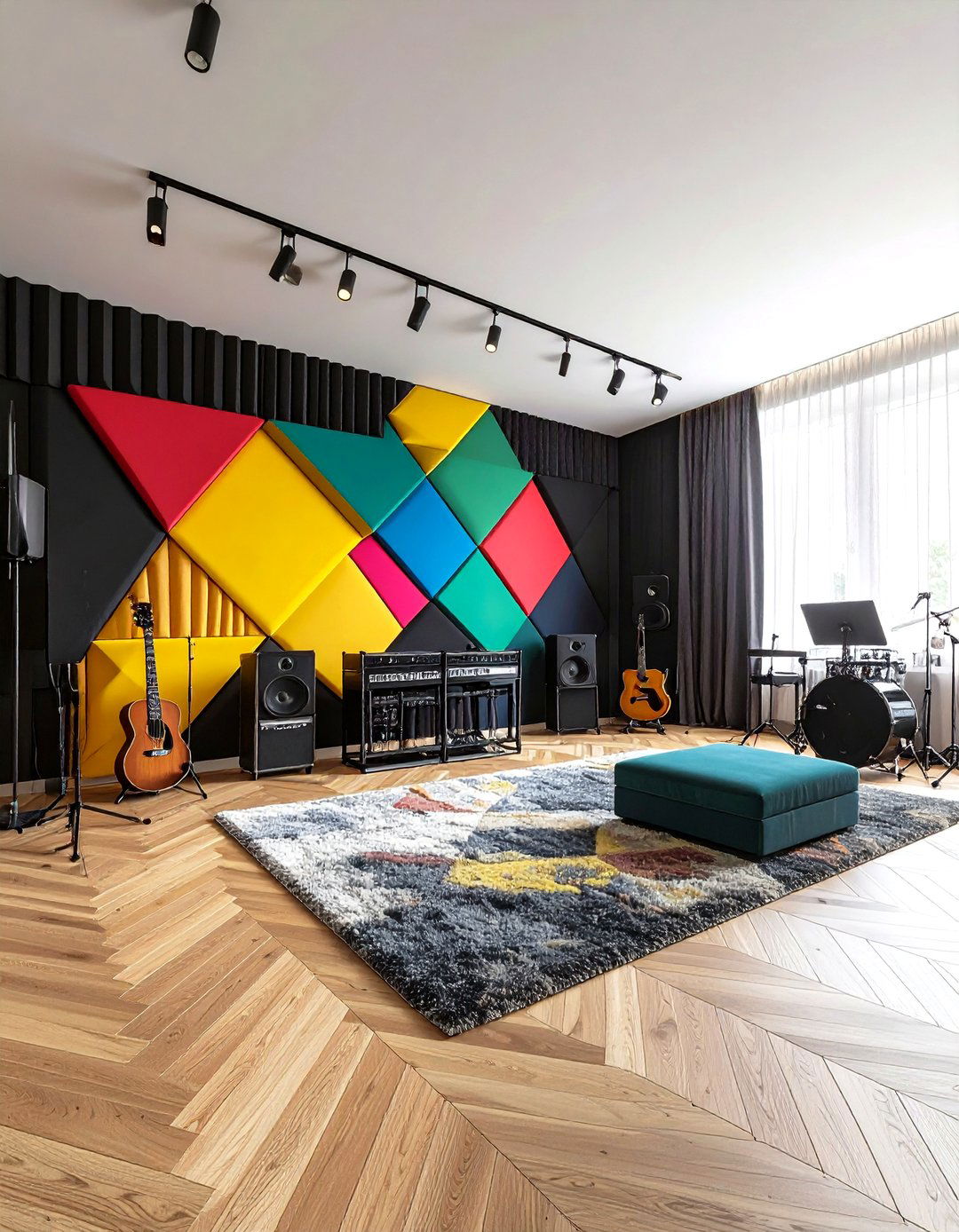
A well-placed acoustic-panel feature wall instantly upgrades any music room by taming flutter echoes while doubling as eye-catching décor. Designers on Houzz show how fabric-wrapped panels can be arranged like modern art, soaking up mids and highs without swallowing the room’s energy. Pinterest boards devoted to studio acoustics confirm even DIY mineral-wool frames work when spaced a few inches off the wall to create an air gap that boosts absorption below 250 Hz. Anchor the look with hardwood floors and a plush rug so bass notes stay punchy — no expensive diffusers required.
2. Multifunction Music Room Corner in Small Apartments
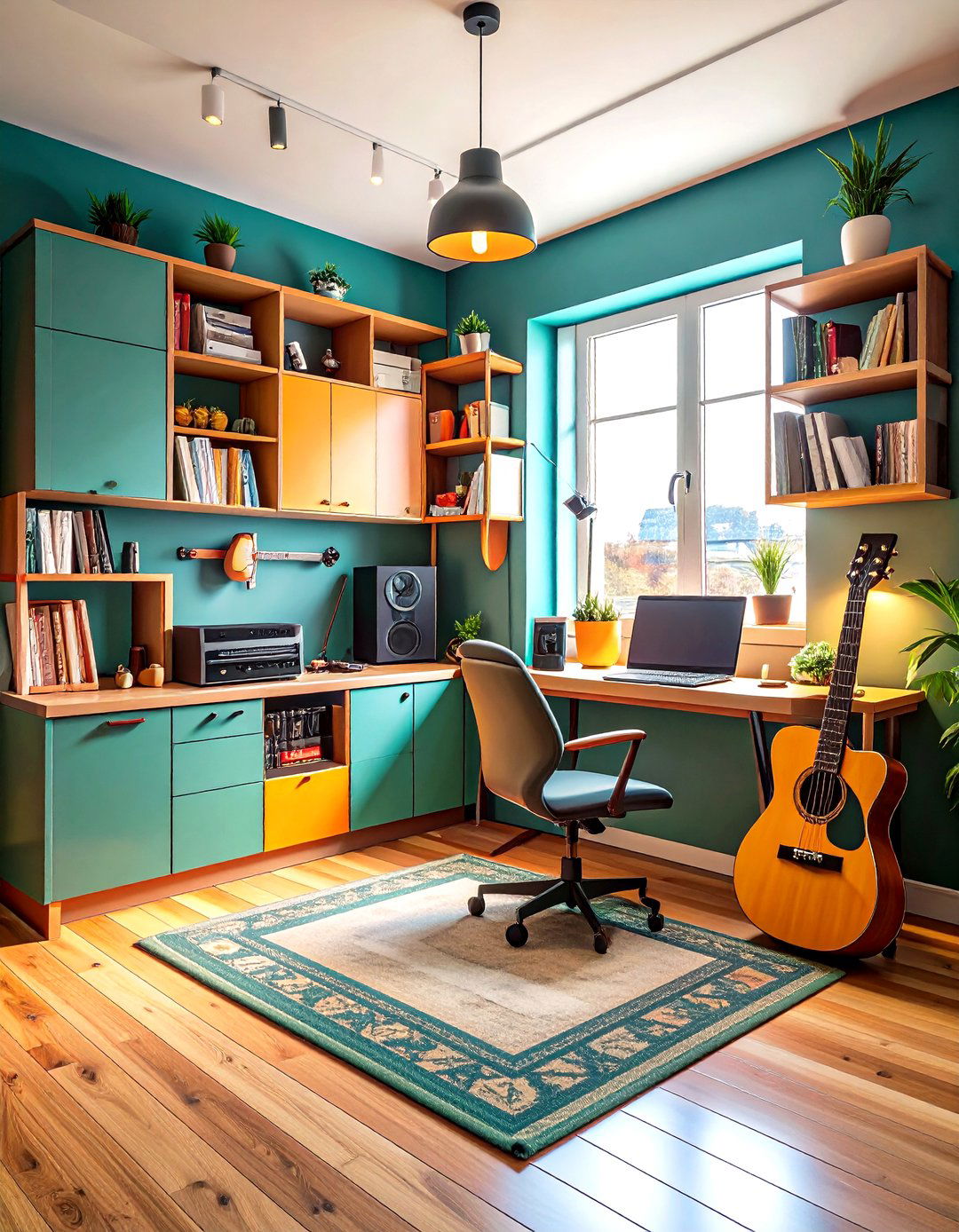
Unlike sprawling studios, an apartment often yields just one corner for a music room, so every square inch must multitask. Pinterest examples pack a record player, guitar rack, and comfy chair into a single 6-foot stretch, proving that intimacy can feel inviting rather than cramped. Sliding cabinets like IKEA’s KUGGIS boxes stack vertically, hiding pedals and cables yet rolling out fast when creativity strikes. Mount floating shelves above head height for mics and décor to free up precious floor area, and add a clamp-on desk lamp to keep sight-reading glare-free.
3. Vinyl Listening Lounge Music Room with Vintage Flair
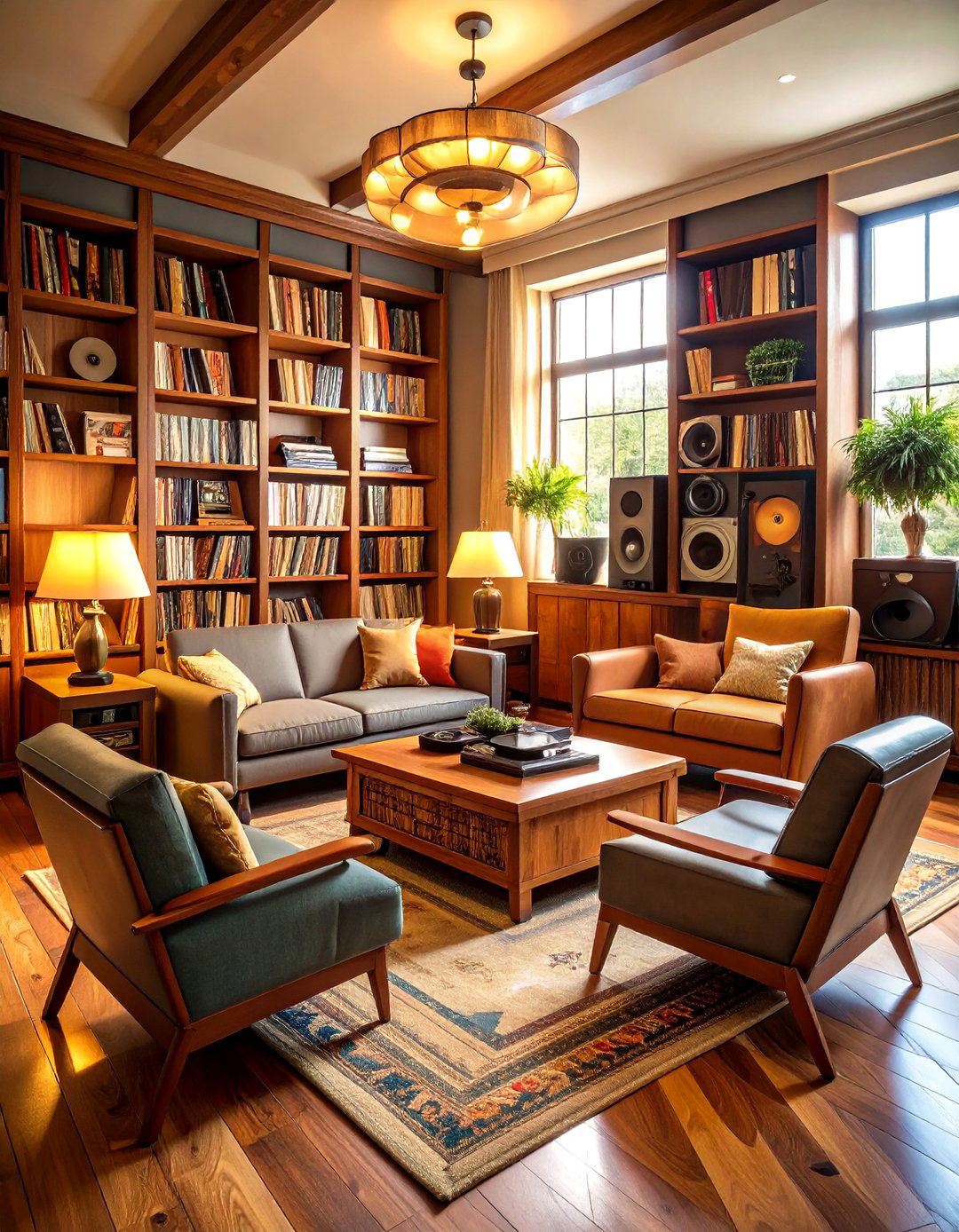
For pure listening pleasure, a vinyl-centric music room focuses on comfort, display, and pristine playback. Oshoom’s step-by-step guide recommends starting with low-slung seating that places ears at tweeter level and leaves a clear triangle to your speakers for ideal imaging. Architectural Digest tours of musicians’ homes reveal how record crates double as both storage and coffee tables, turning the collection itself into the room’s artwork. Finish with dimmable incandescent bulbs that flatter album-cover colors while avoiding the hum sometimes introduced by cheap LED drivers.
4. Soundproof Basement Music Room Conversion
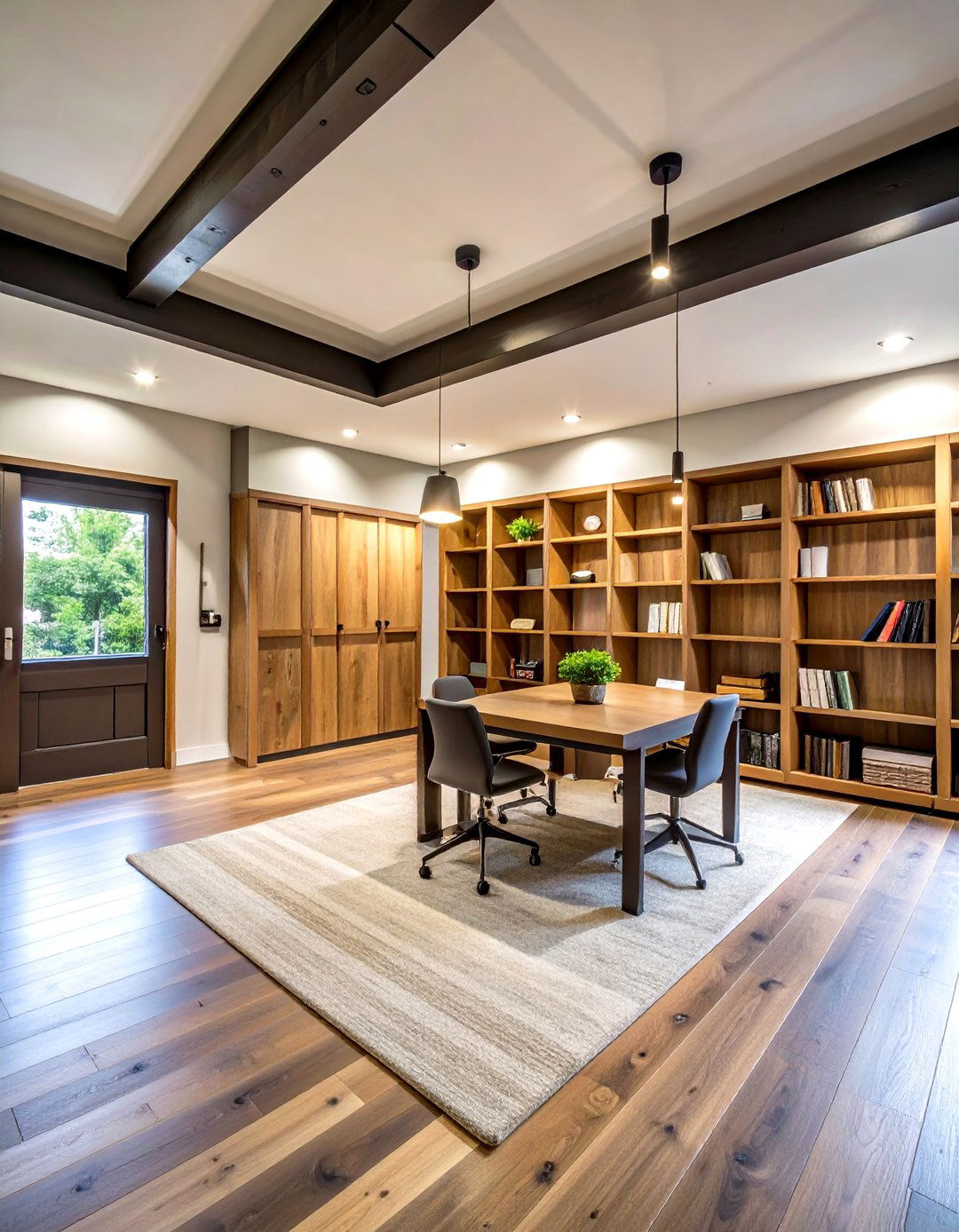
A below-grade space keeps household noise upstairs, but concrete walls bounce low frequencies mercilessly. Instructables’ step-by-step basement build demonstrates adding staggered-stud framing and Roxul insulation before a floating drywall shell, reducing outside bleed by more than 20 dB. Bob Vila’s soundproofing roundup suggests placing filled bookcases along exterior walls to further block street rumble without pricey mass-loaded vinyl. Seal HVAC vents with flexible duct liners and use a solid-core door with neoprene sweeps so late-night drumming never wakes the neighbors.
5. Smart LED Mood Lighting for Creative Music Room Vibes
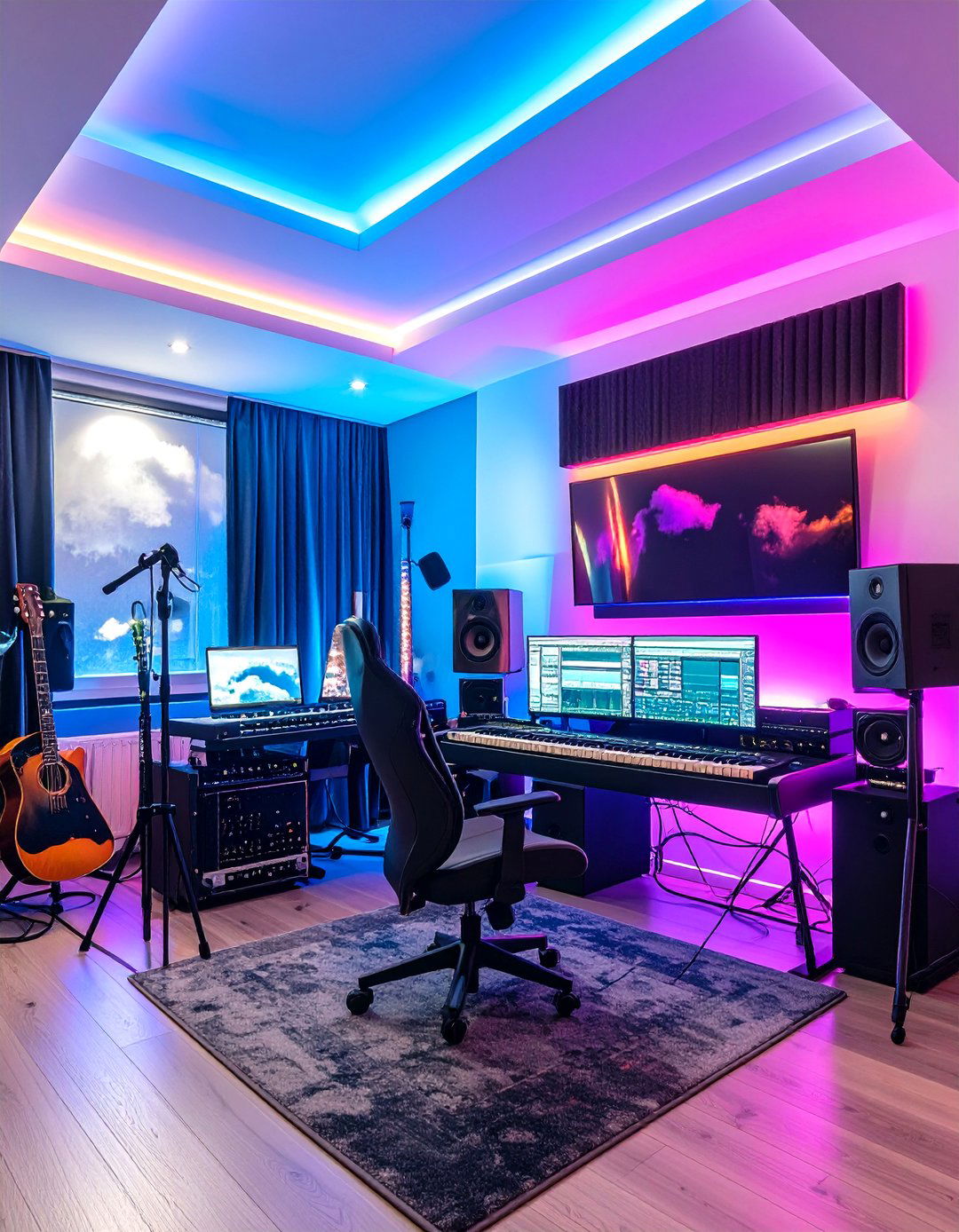
Certainly, lighting drives emotion inside a music room as much as chord progressions. BlissLights’ studio guide lists RGB LED strips, lava lamps, and app-controlled bulbs as quick swaps that shift from calm blues during mixing to fiery reds for live takes. The Verge’s report on party speakers with synchronized lights hints at pairing light pulses to tempo, creating immersive rehearsal energy for bands practicing tight rhythmic parts. Hide strips behind acoustic clouds for indirect glow that won’t glare off glossy guitar finishes.
6. Colorful Kids’ Music Room That Doubles as Play Space
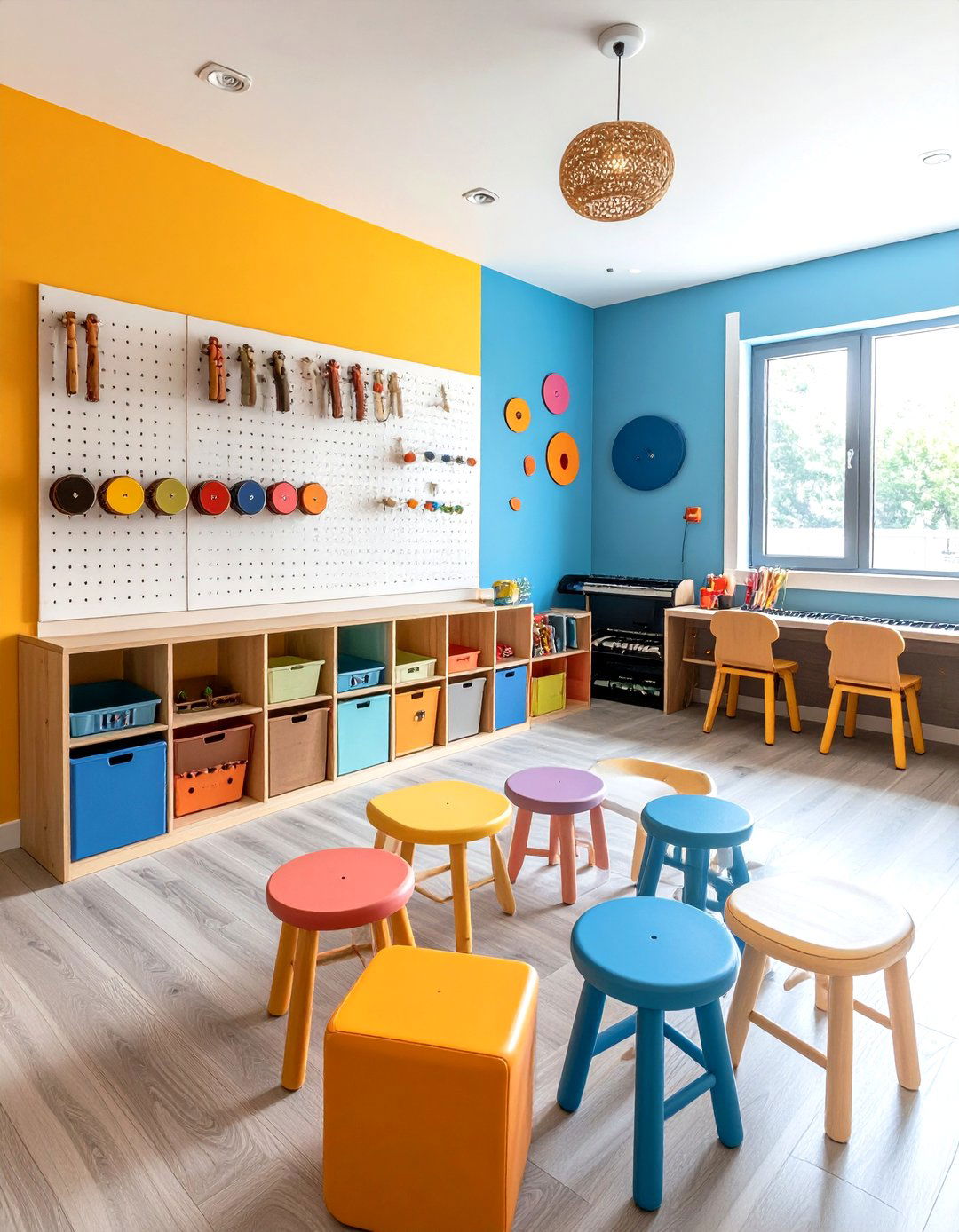
For young learners, a music room should be cheerful, durable, and storage-savvy. Classroom-inspired pegboards from Pinterest keep percussion toys within arm’s reach while teaching kids to tidy instruments after each jam. Low, rolling cubbies stow recorders and ukuleles yet slide under a keyboard stand when floor games take over. Paint walls with washable, matte latex so stray mallet scuffs wipe clean, and add stackable stools so friends can join without tripping over bulky chairs.
7. Plant-Enhanced Music Room for Natural Acoustics
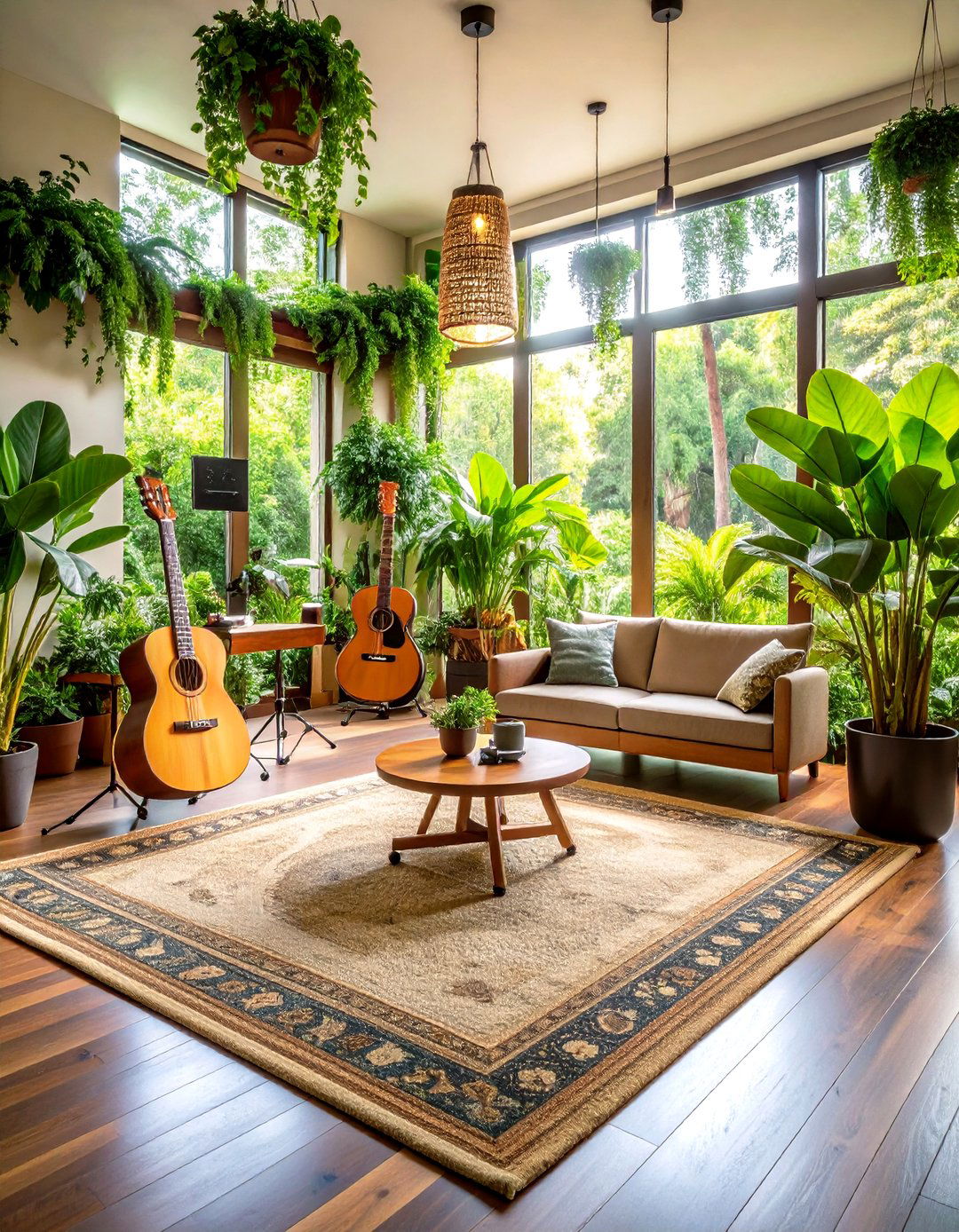
Surprisingly, leafy décor pulls double duty: large planters disperse midrange reflections, and moist soil dampens flutter echoes. Audio-engineering forums confirm that dense foliage barely absorbs sound, but the pot and dirt contribute meaningful broadband absorption when placed at first-reflection points. The Spruce’s music-room roundup suggests pairing rubber trees with thick wool rugs to soften high-ceiling brightness while keeping air refreshed. Pick species like sansevieria that tolerate low light and irregular watering — ideal for windowless basement studios.
8. Closet Vocal Booth Inside a Compact Music Room
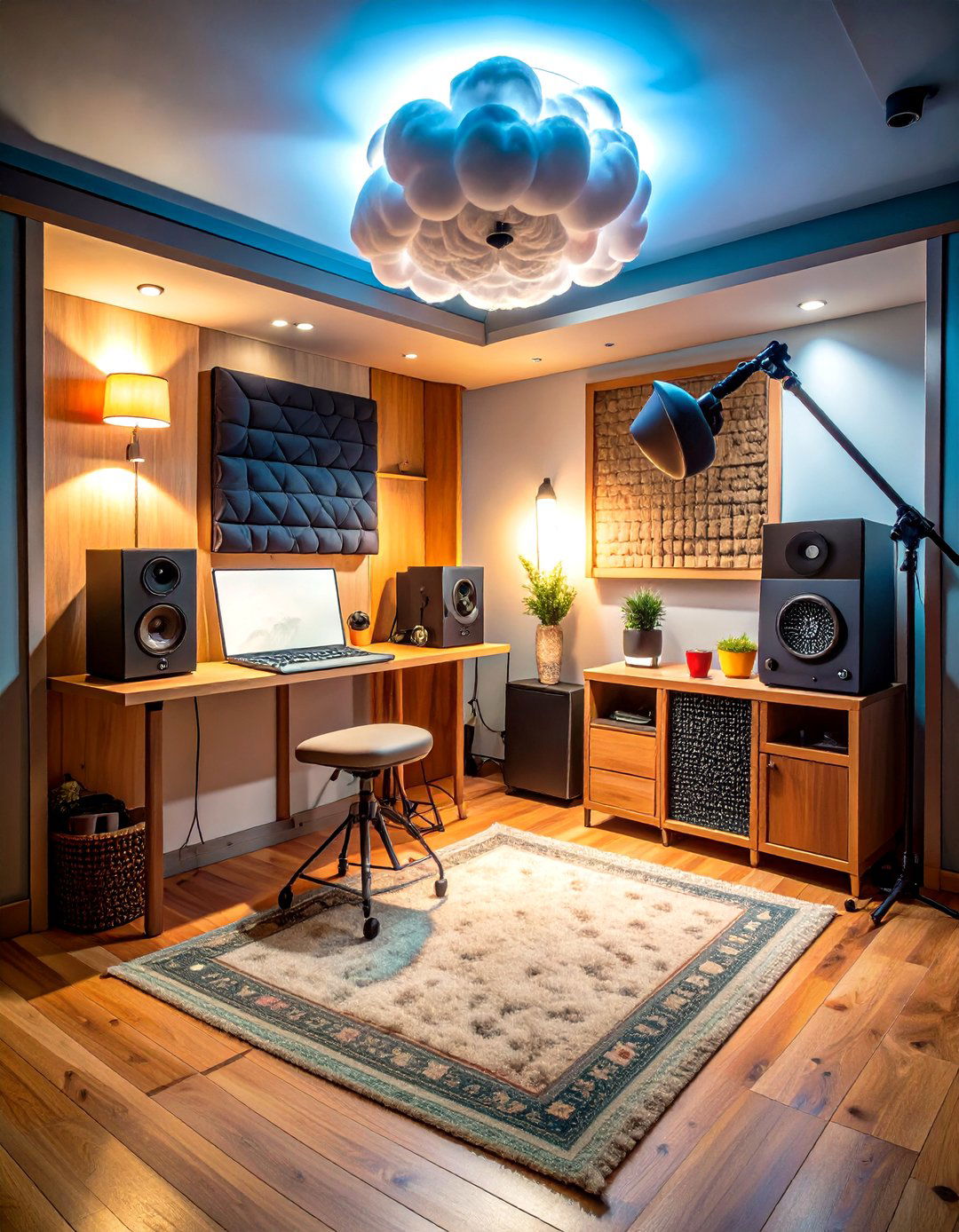
When square footage is scarce, a walk-in closet transforms into a surprisingly effective vocal booth. Voice-acting pros on Reddit advise clearing clothes to prevent muffled highs, then lining walls with 2-inch acoustic foam and a moving blanket ceiling cloud. Add a portable LED fan to fight heat buildup and a small USB interface mounted on a boom arm so singers can punch-in takes solo. Keep the closet door ajar between sessions to prevent musty smells from damp foam.
9. Statement Wall Art to Showcase Personality in a Music Room
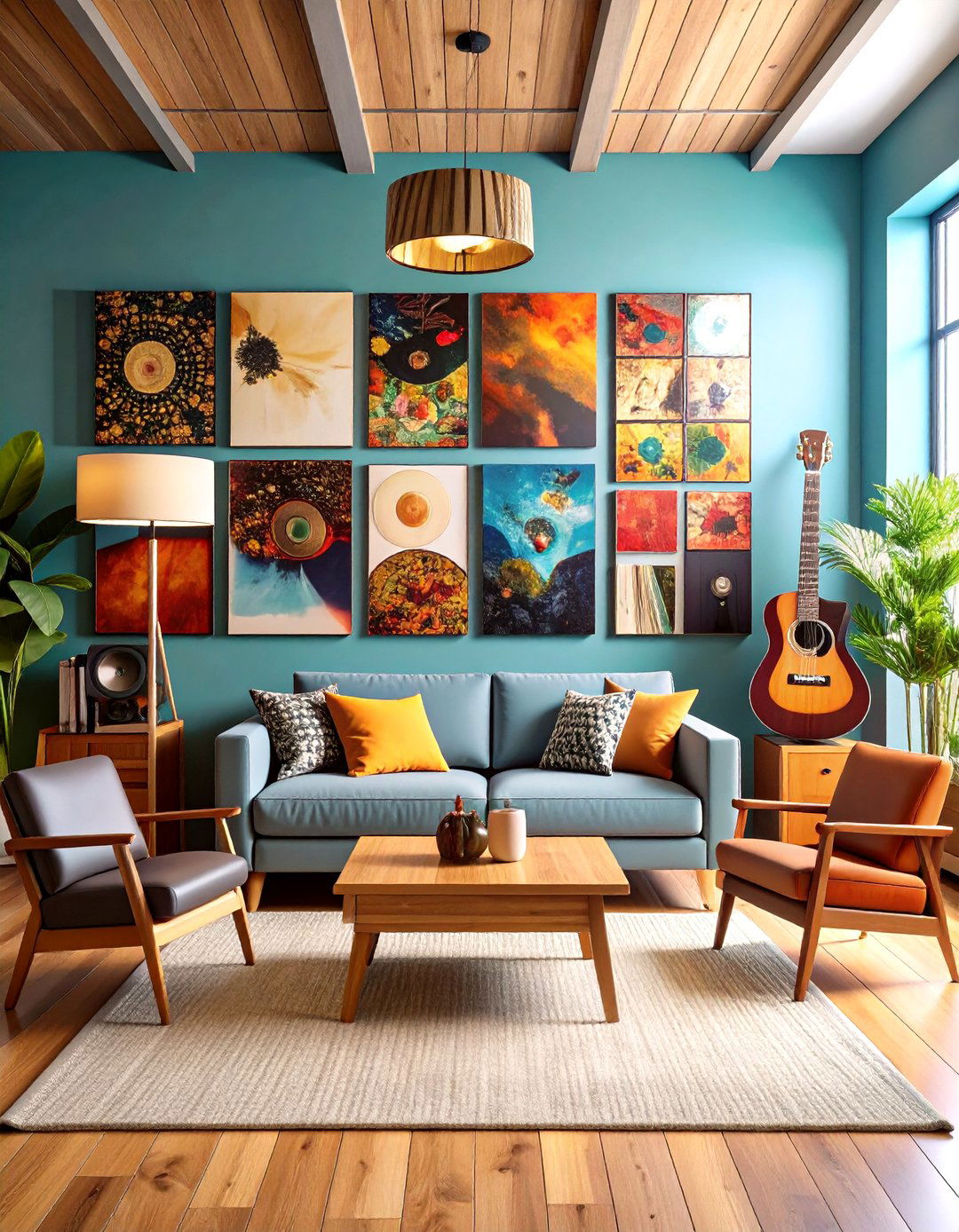
Bold art pieces spark inspiration every time you pick up an instrument. The Spruce’s wall-decor guide touts oversized canvases and layered album covers as instant focal points that break up parallel surfaces and improve diffusion. Combine framed tour posters with small wood diffusers arranged mosaic-style to marry form and acoustic function. Stick to a cohesive color palette so the music room feels curated rather than chaotic.
10. Modular Storage Solutions to Tidy Music Room Gear

Take control of cable spaghetti with stackable bins and open-front drawers. IKEA’s small-space experts recommend uniform boxes that slide under sofas or desk risers, keeping pedals dust-free yet accessible. Houzz galleries show custom wall-mounted grid racks that hold everything from trumpets to tablet controllers, freeing floor real estate for amps or seating. Label each container with QR codes linked to gear checklists so you never hunt for that missing patch cord again.
11. Minimalist Music Room Studio Desk Ergonomics
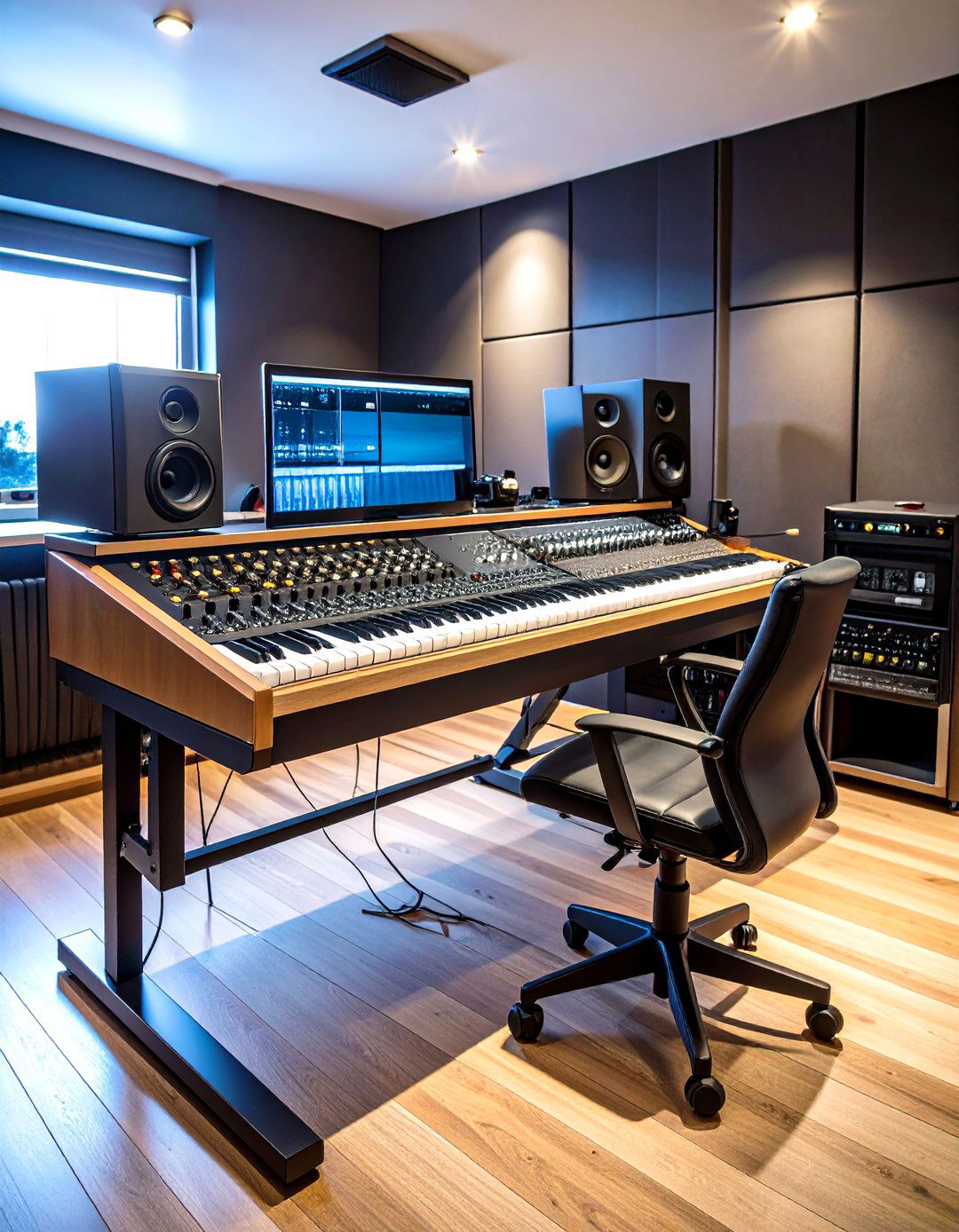
With gear prices falling, the real luxury is a spacious desk that protects posture. Sweetwater’s ergonomics article notes that height-adjustable studio desks align tweeters at ear level while allowing wrists to hover neutrally over MIDI keys. Sound on Sound’s home-studio primer adds that sliding keyboard trays keep elbows at roughly 90 degrees, reducing fatigue during eight-hour mix sessions. Cable grommets routed to an under-desk raceway maintain the minimalist vibe.
12. Classical-Inspired Music Room Salon for Piano Practice
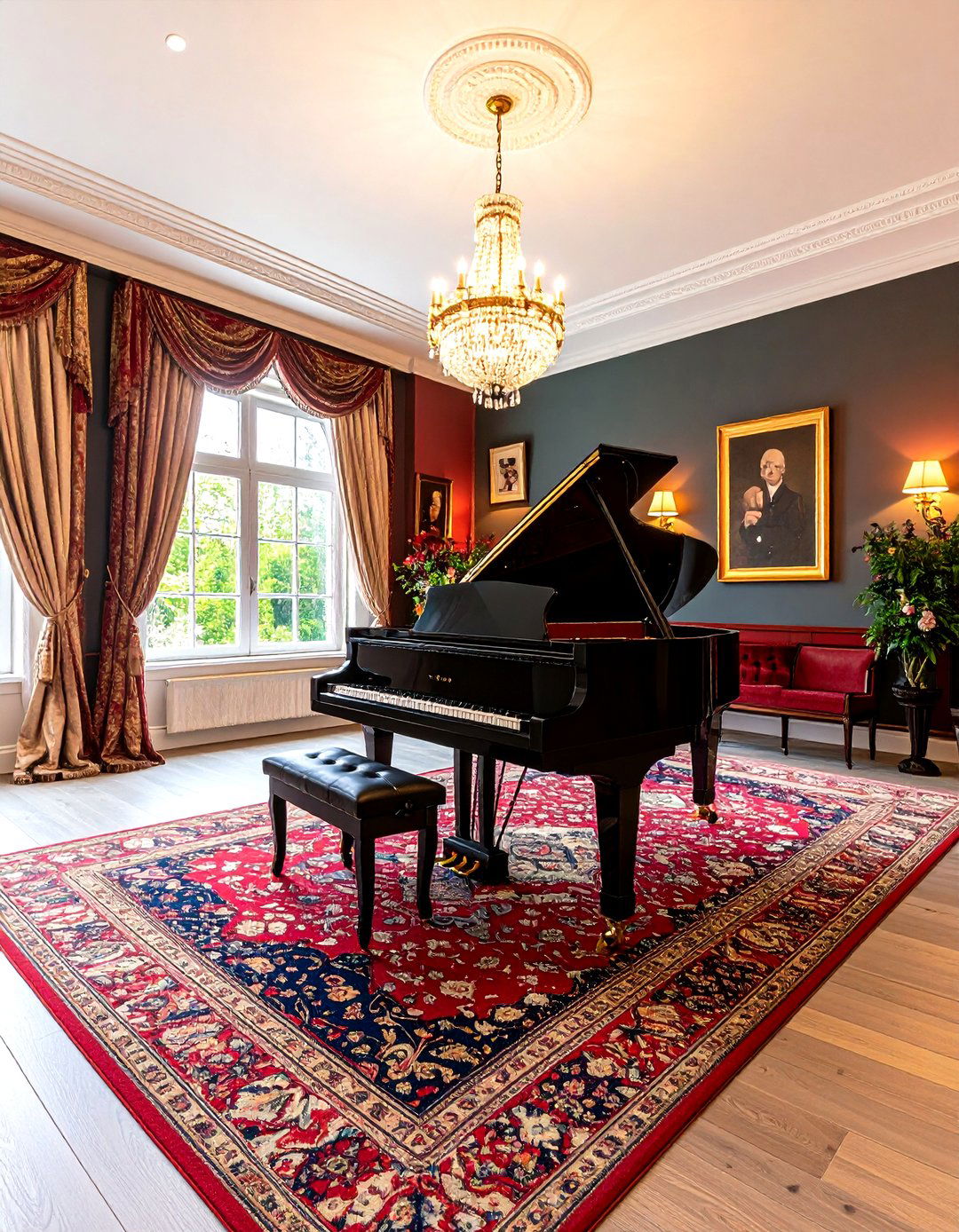
For pianists, a music room can channel 19th-century salons without feeling stuffy. Architectural Digest features spaces where upright pianos face tall windows, maximizing daylight for sheet-music clarity while drapes soften echoes. Swap ornate sconces for modern picture lights above composer portraits to celebrate heritage yet stay contemporary. A Persian-style rug under the bench stabilizes pedals and dampens hammer noise so practicing late nocturnes doesn’t disturb upstairs bedrooms.
13. Bohemian Instrument Wall Display Music Room
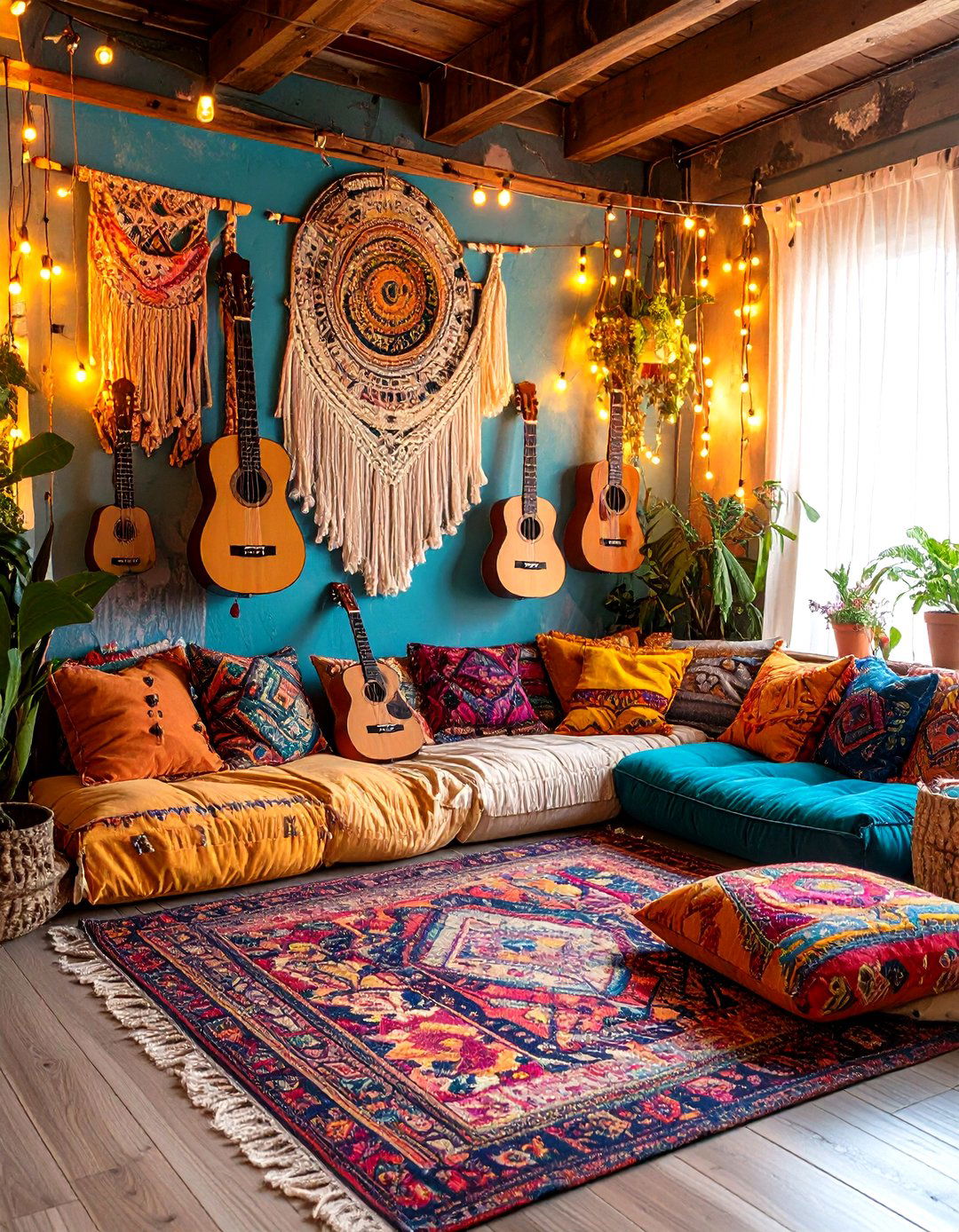
Looking for eclectic flair? Pinterest showcases bohemian music rooms where guitars, ukuleles, and shakers hang on patterned walls like wearable art, encouraging spontaneous jams. Etsy-sourced macramé straps add texture while permitting quick removal for performance. Layer floor cushions instead of chairs, letting players gather in a circle, and string warm fairy lights overhead for festival vibes.
14. Attic Music Room Under Sloped Ceilings
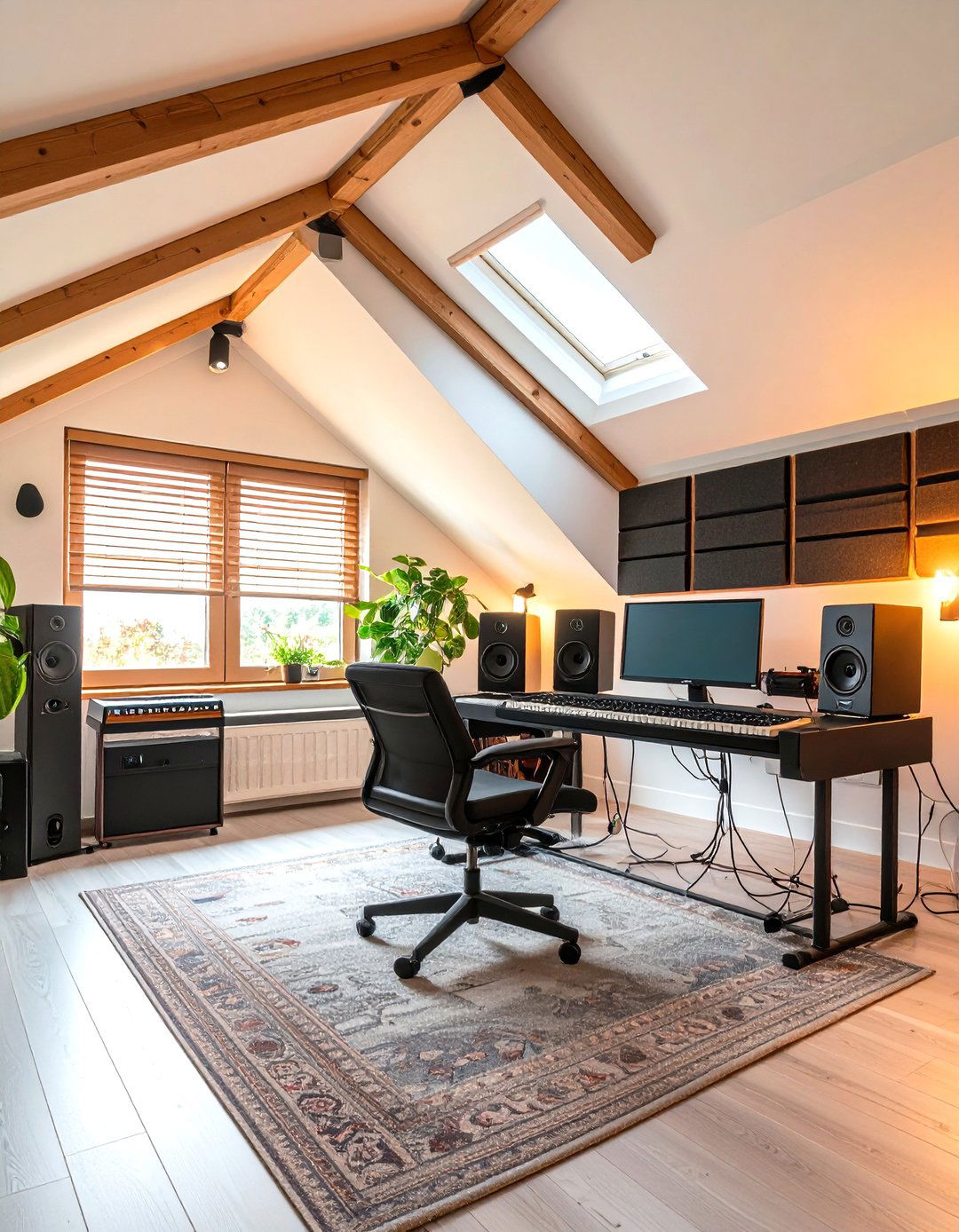
Despite asymmetry, an attic makes an intimate retreat once treated correctly. Reddit mix-engineers recommend positioning the desk so monitors fire down the long axis, avoiding early reflections off low eaves. YouTube acousticians show that angled ceilings break up standing waves naturally, but bass traps in the front corners still tame modal peaks. Install skylight blinds to control glare on laptop screens during daytime sessions.
15. Mid-Century Modern Music Room Den

Those who adore clean lines and walnut finishes can style a music room around mid-century classics. House Beautiful spotlights a ’70s-inspired listening lounge where slatted wood wallcoverings double as diffusers while a camel-leather sofa invites marathon album spins. A Design Within Reach LC4 chaise offers reclined comfort for headphone mixes without pressuring the lower back. Keep palette muted — olive, ochre, teak — to let instruments shine as sculptural accents.
16. Industrial Loft-Style Music Room with Exposed Brick
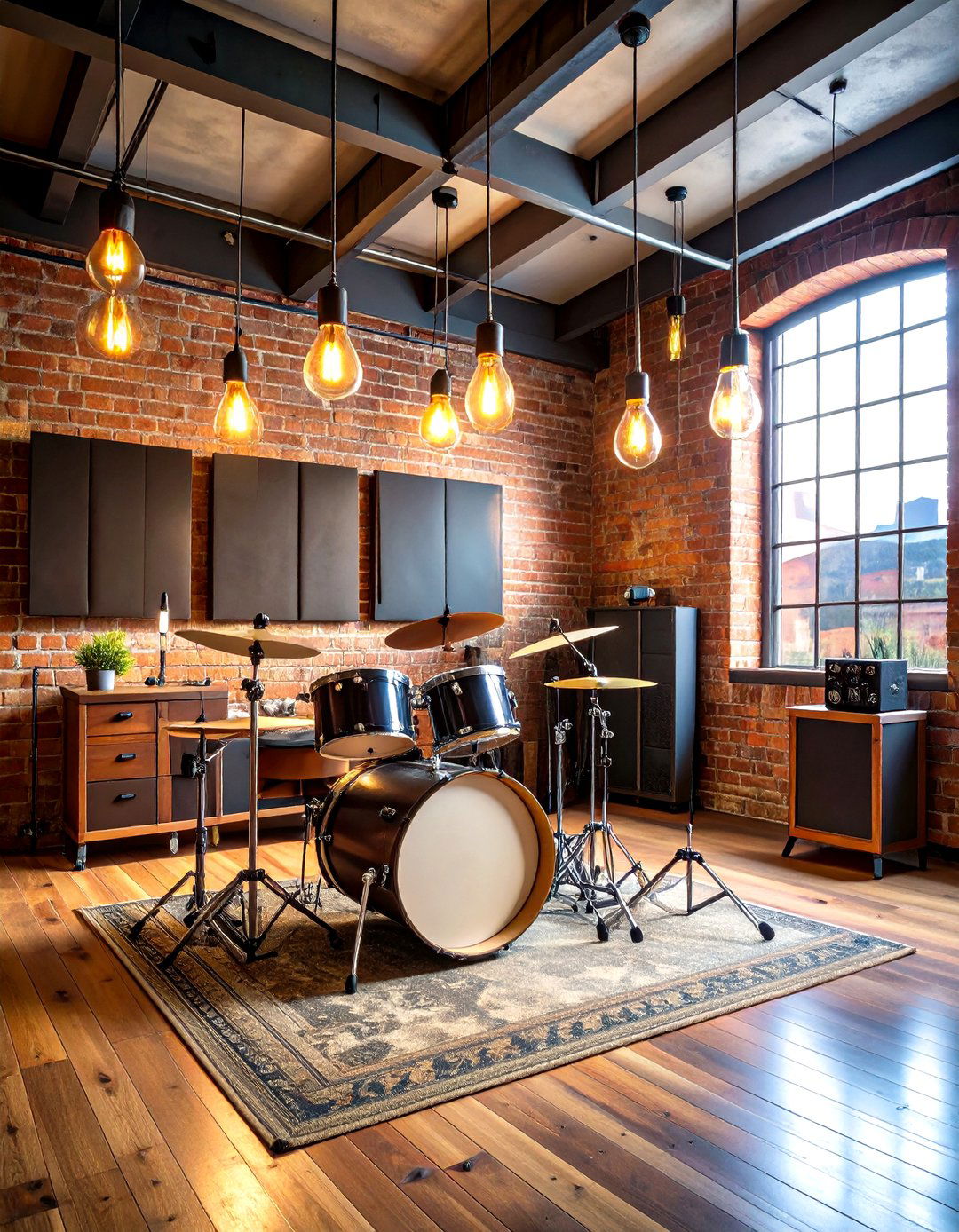
Bringing gritty energy, an industrial-leant music room pairs distressed brick with steel pipe shelving. Home Design Lover’s loft tour proves raw masonry diffuses midrange while adding visual drama behind drum kits. Temper brightness by suspending salvaged acoustic-panel clouds stained charcoal to blend into ceiling beams. Edison bulbs on black cords echo warehouse origins and supply flattering warmth on video streams.
17. Home Concert Stage Music Room with Seating
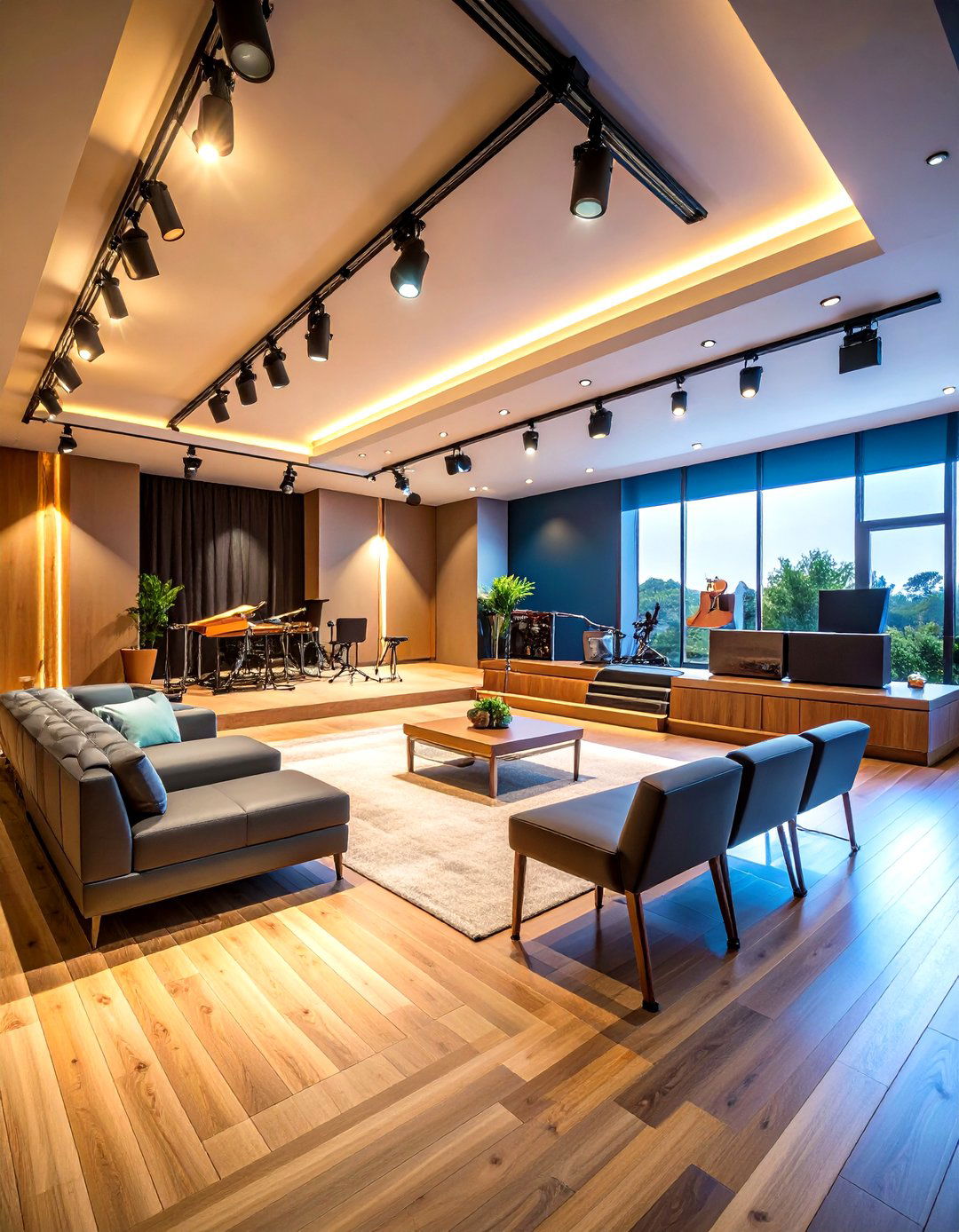
A raised platform only 6 inches tall gives performers presence while preserving ceiling height. The Spruce’s music-room ideas highlight built-in banquettes along sidewalls, supplying storage for mic stands and doubling as audience seating during house shows. Add track lighting aimed at the stage edge so shadows fall behind musicians, replicating professional venues without requiring truss systems.
18. Retro-Futuristic Synth Lab Music Room
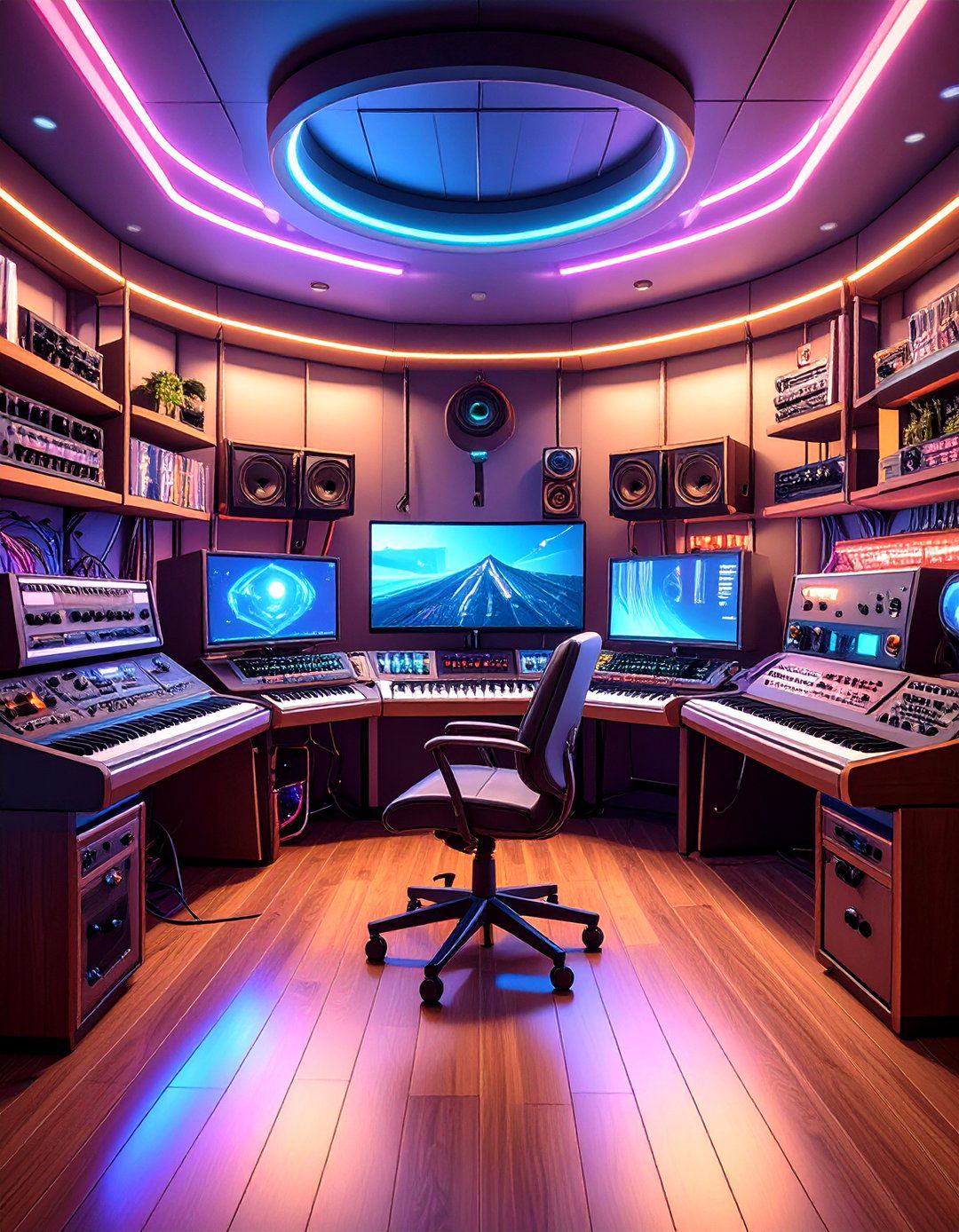
For electronic producers, a music room can feel like stepping into Tomorrowland. Sweetwater’s studio-upgrade guide suggests arranging keyboards in a semicircle around a rolling captain’s chair, minimizing swivel time between synths. Accent neon-lit rack shelves with chromed cable snakes to nod at ’80s arcade aesthetics. Mount an ultra-wide monitor on an arm so DAW timelines stretch invitingly across the command center.
19. Outdoor-Inspired Sunroom Music Room
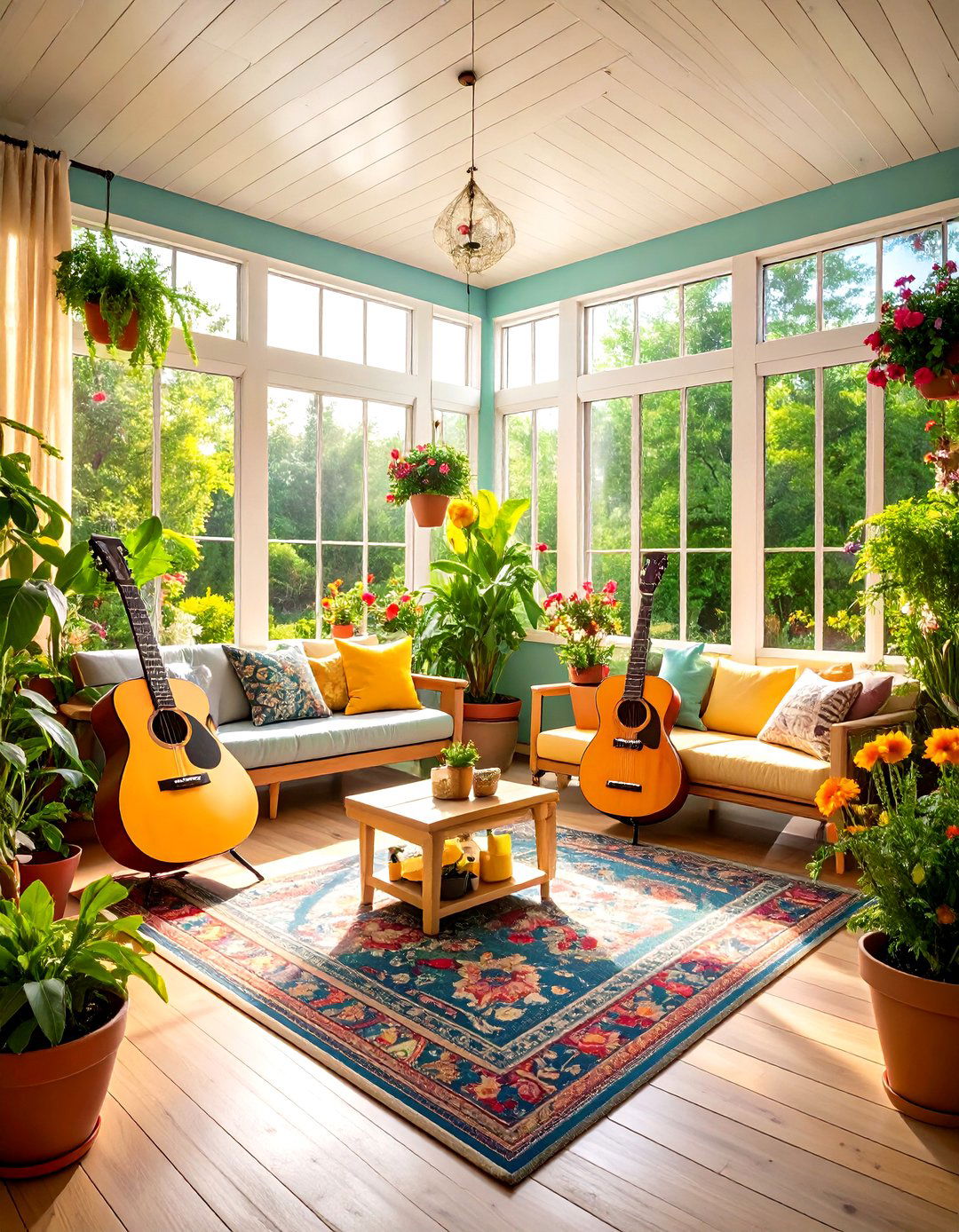
Bringing daylight and greenery indoors boosts creativity, The Spruce notes, especially when recording acoustic instruments that thrive on lively highs. In a sunroom music room, mount sheer curtains to temper reflections off glass and place rugs perpendicular to planked ceilings for cross-grain diffusion. A small dehumidifier protects wood instruments during monsoon seasons while still letting you enjoy the garden view.
20. Under-Stairs Music Room Nook
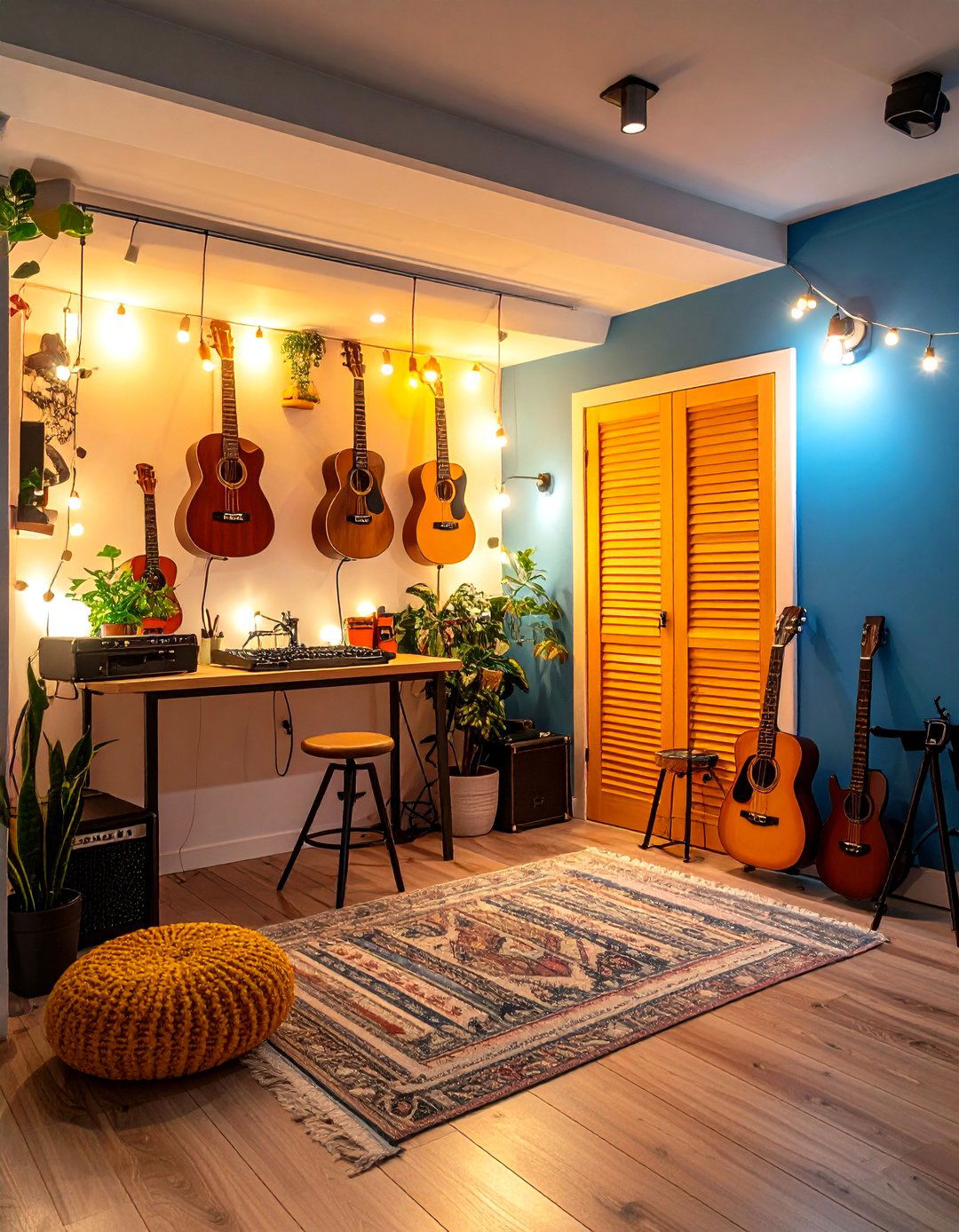
Take advantage of forgotten architectural voids: Houzz photos show under-stairs niches outfitted with wall-hung guitars, mini amps, and a folding stool, forming a stealth music room for quick practice breaks. Install a louvered door to hide clutter yet maintain airflow, and stick battery-powered puck lights on risers so you’re not wiring through concrete treads.
21. Smart Multi-Room Connected Music Room Hub
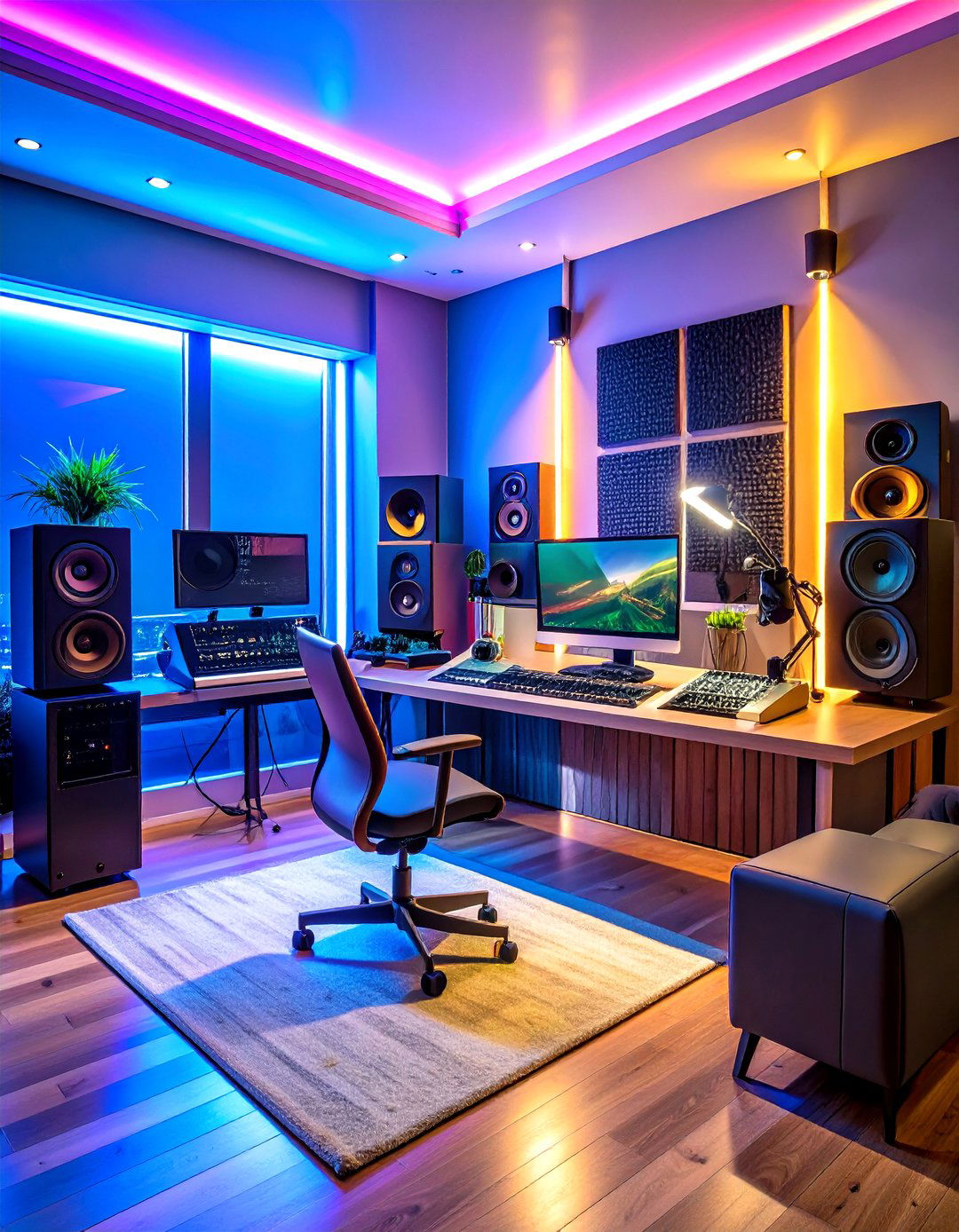
To integrate playback everywhere, TechRadar’s multiroom audio guide recommends a mesh-Wi-Fi streamer feeding powered speakers in each space, all controllable from a single app. Place the hub in your primary music room, routing balanced outs to interface inputs so you can capture spontaneous living-room jams onto your DAW. Assign voice assistants to trigger playlists, leaving hands free for instruments.
22. Inspirational Mood Board Wall in Your Music Room
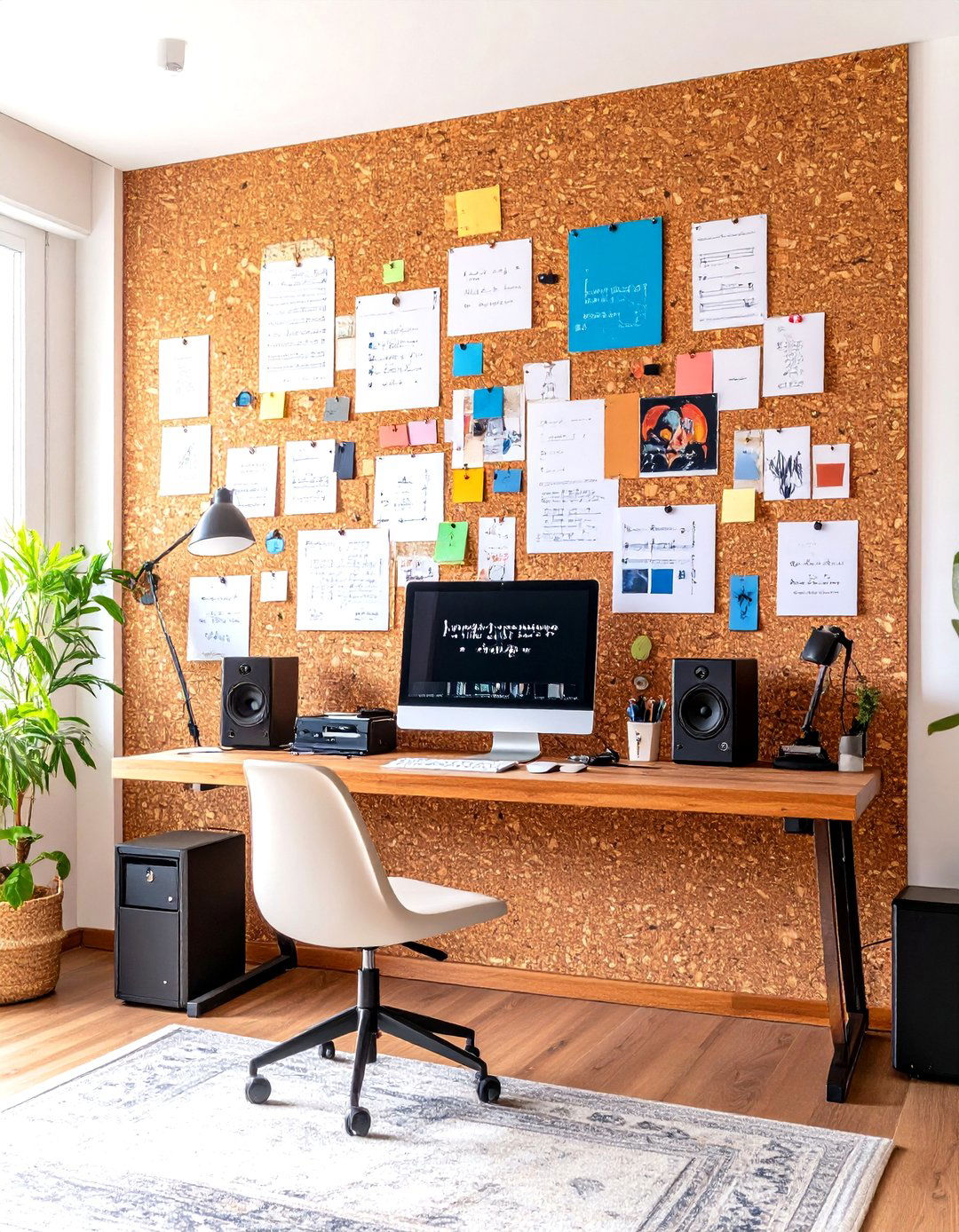
Consider dedicating one cork-backed wall to sketches, lyric snippets, and color swatches. The Spruce’s décor advice touts mood boards as living artworks that evolve with each project, visually tracking creative arcs. Pin thumbtacked postcards between diffusers to break up symmetry, and snap weekly photos to document progress before rearranging.
23. Compact Mobile Music Room with Foldaway Furniture
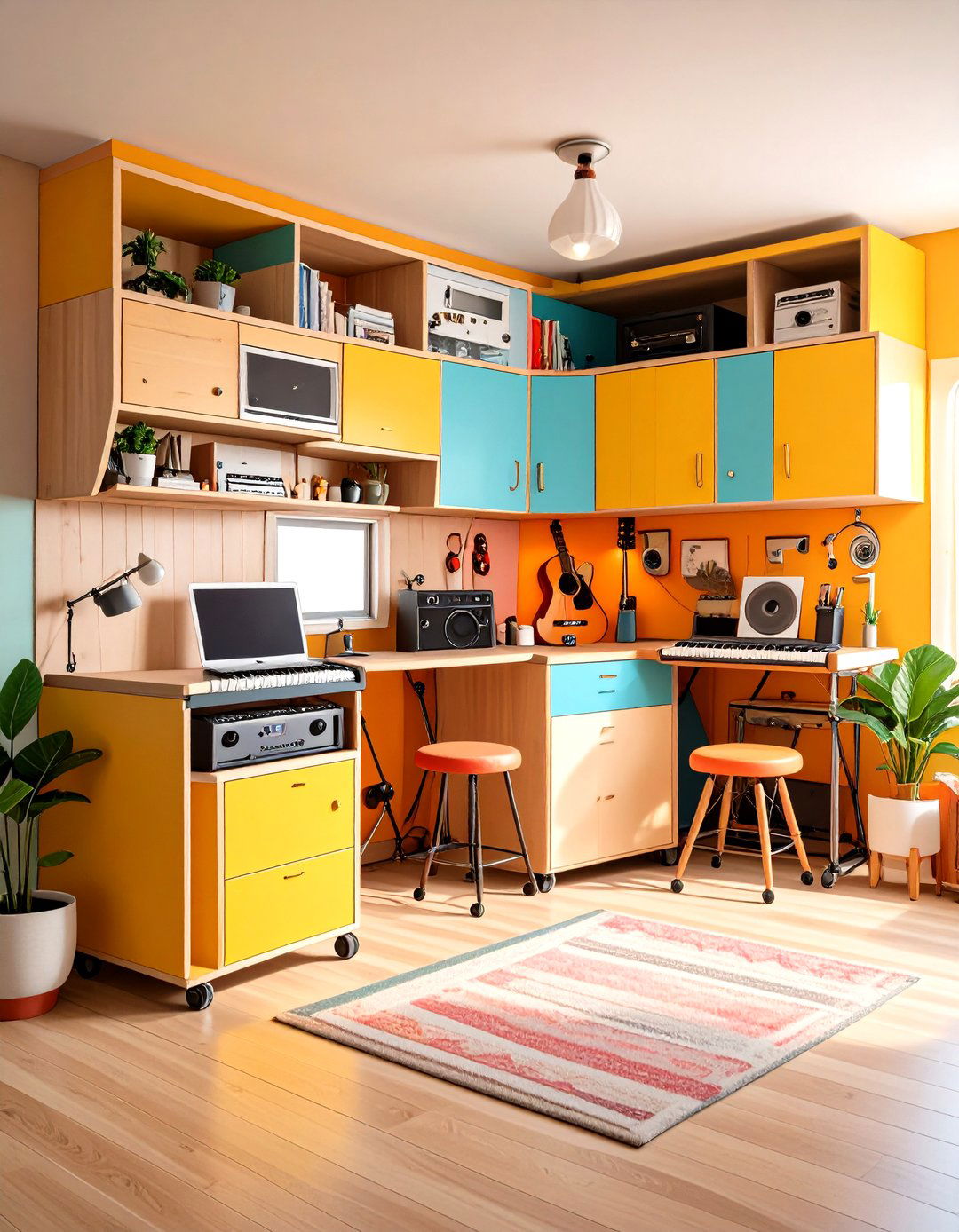
For renters, portability is key. IKEA box systems stack into a rolling tower topped by a fold-down desk, morphing any corner into a pop-up music room at rehearsal time. Pair it with a collapsible X-frame keyboard stand and nesting stools, then park the entire rig inside a closet when company arrives. Casters with brakes prevent unwanted wobble while tracking.
24. Green-Screen Recording Corner in a Music Room
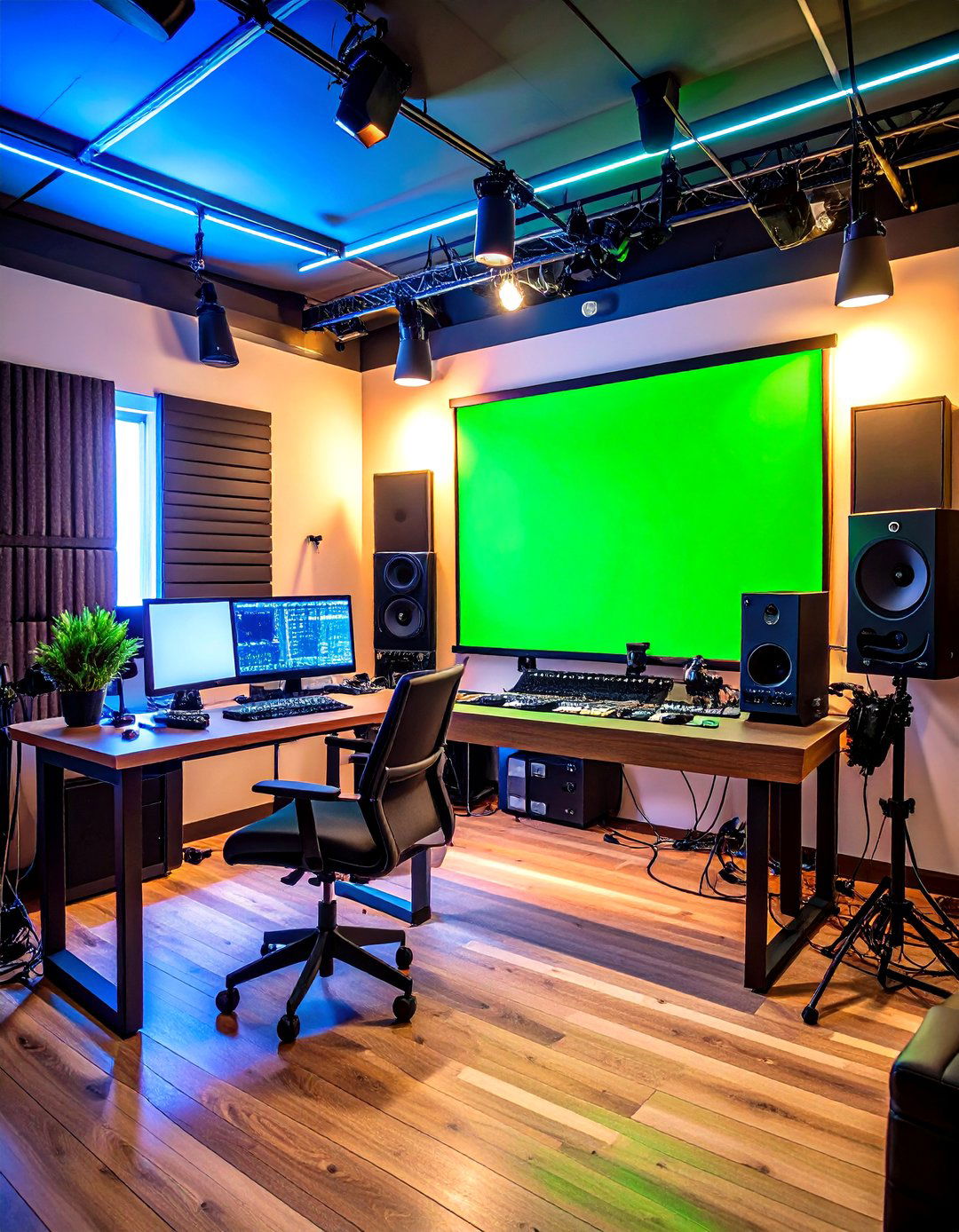
Content creators can carve out a 5-foot backdrop wrapped in chroma-green fabric for quick video loops. Sweetwater’s professional-look tips mention wall-mounted retractable screens that roll away so the rest of the music room stays décor-forward between shoots. LED panel lights with diffusion socks minimize shadows, making post-production keying painless.
25. Accessible Open-Plan Family Jam Music Room
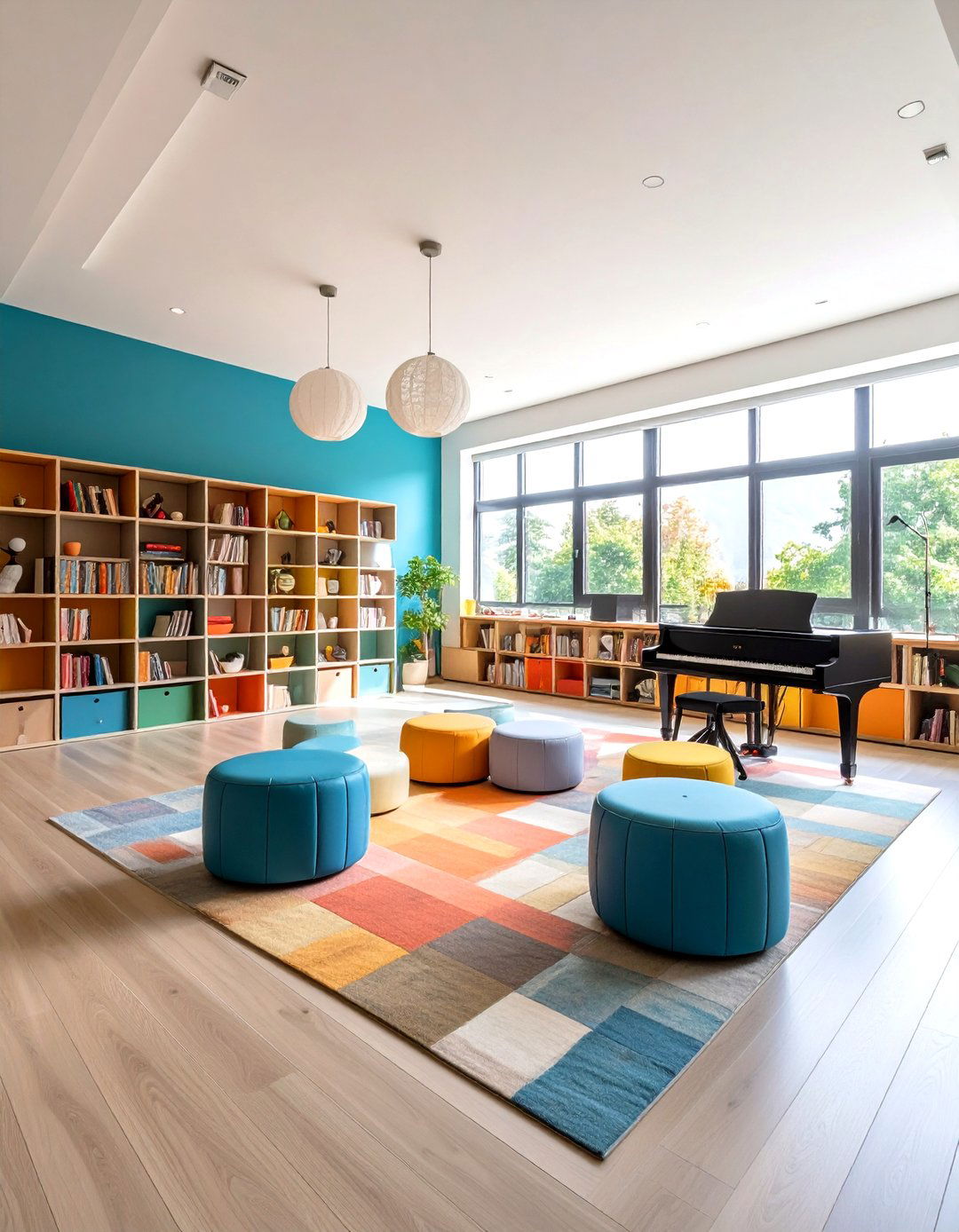
Finally, those sharing music across generations might prefer an open-plan layout. The Spruce illustrates living-room hybrids where a piano anchors one end, drum pads hide in ottomans, and wireless mics feed a corner interface for impromptu karaoke nights. Keep walkways clear to accommodate wheelchairs or toddlers, using low bookshelves as both room dividers and absorption panels.
Conclusion:
A thoughtfully designed music room marries acoustics, aesthetics, and ergonomics to nurture creativity and protect your ears. From acoustic-panel art walls to smart multiroom hubs, each idea above demonstrates how small design moves — whether shifting a bookcase, adding a plant, or swapping bulbs for RGB LEDs — can transform both sound quality and daily inspiration. Pick the concepts that resonate, adapt them to your square footage and style, and let your personalized music room become a stage where practice, recording, and pure listening play in perfect harmony.


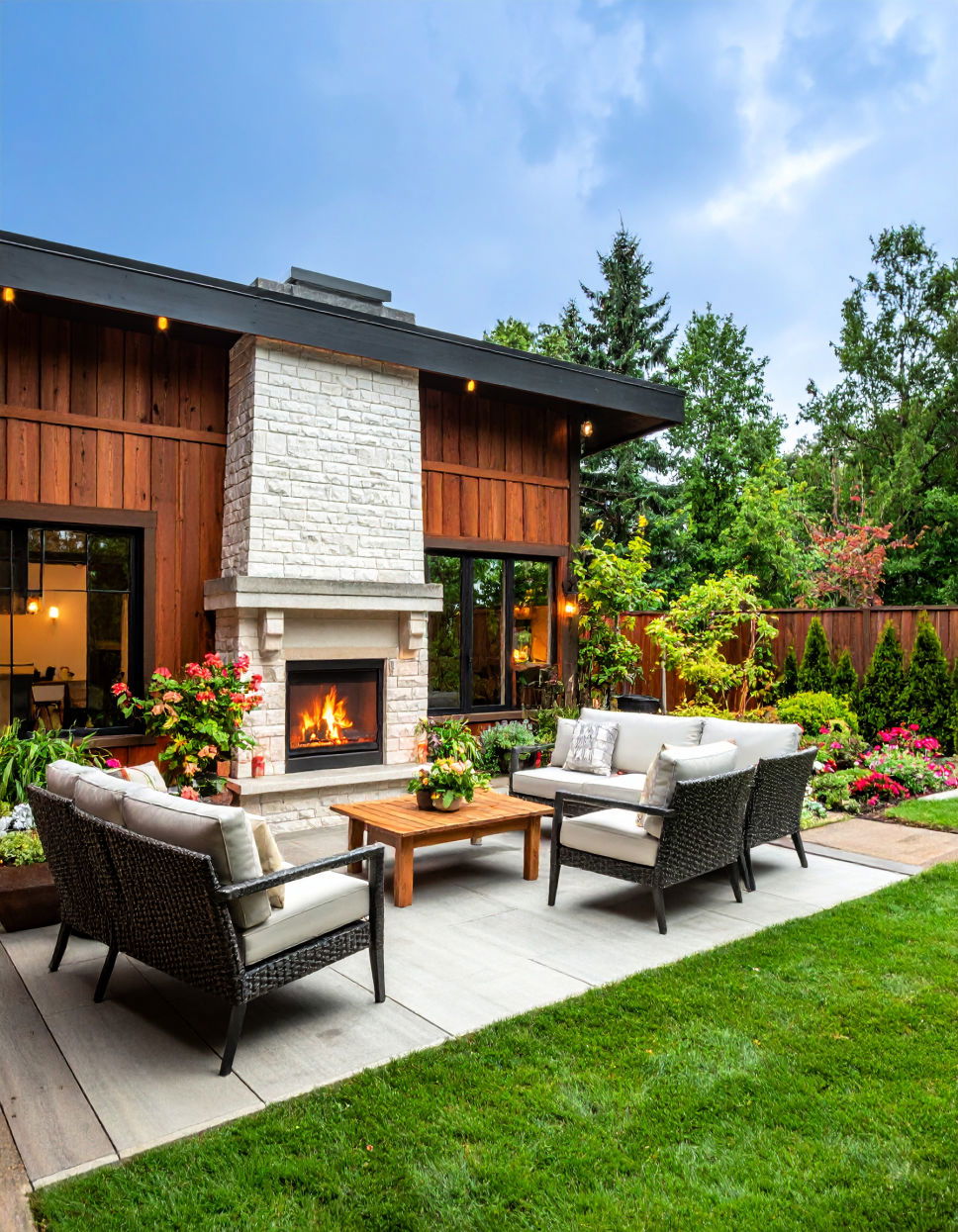
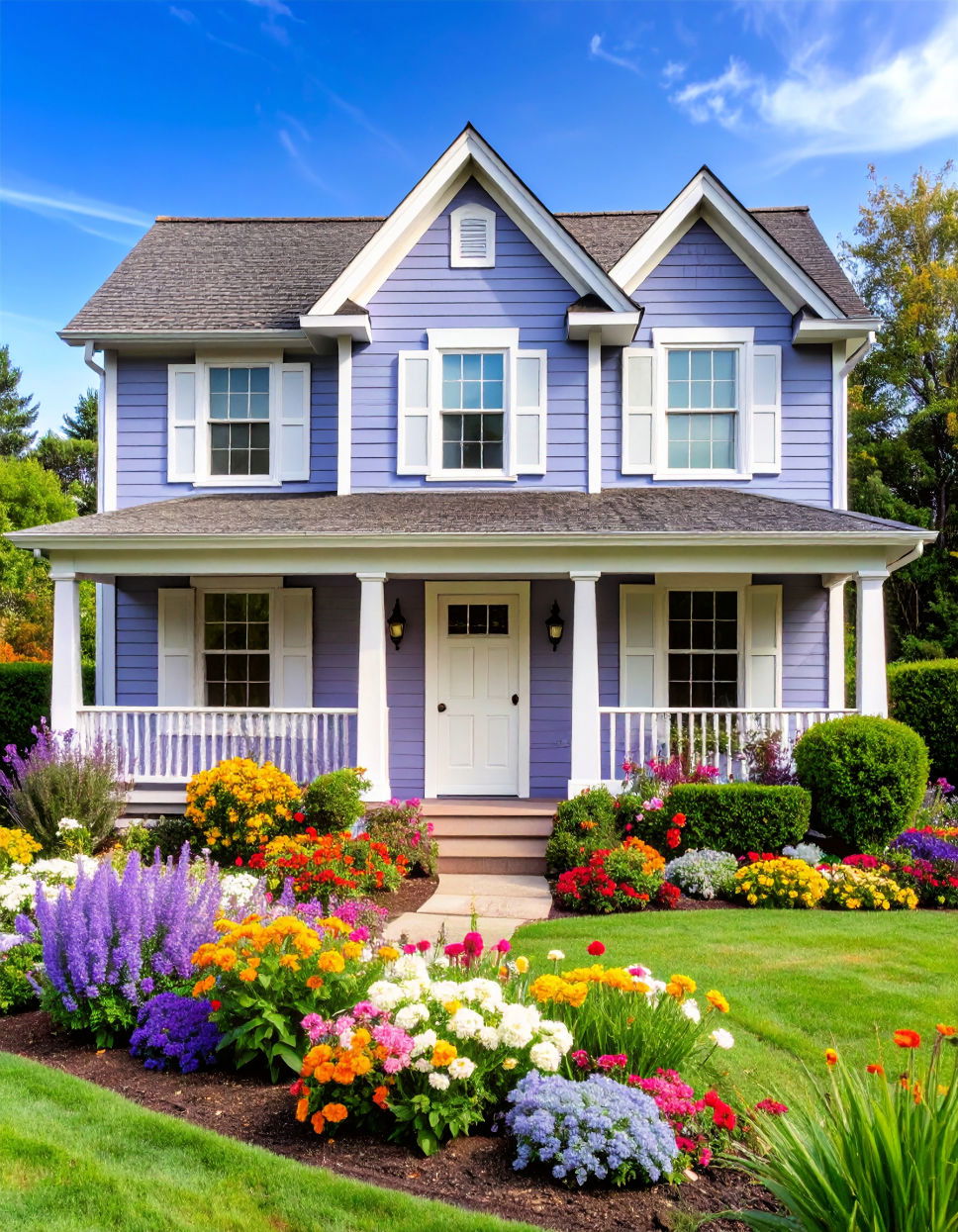
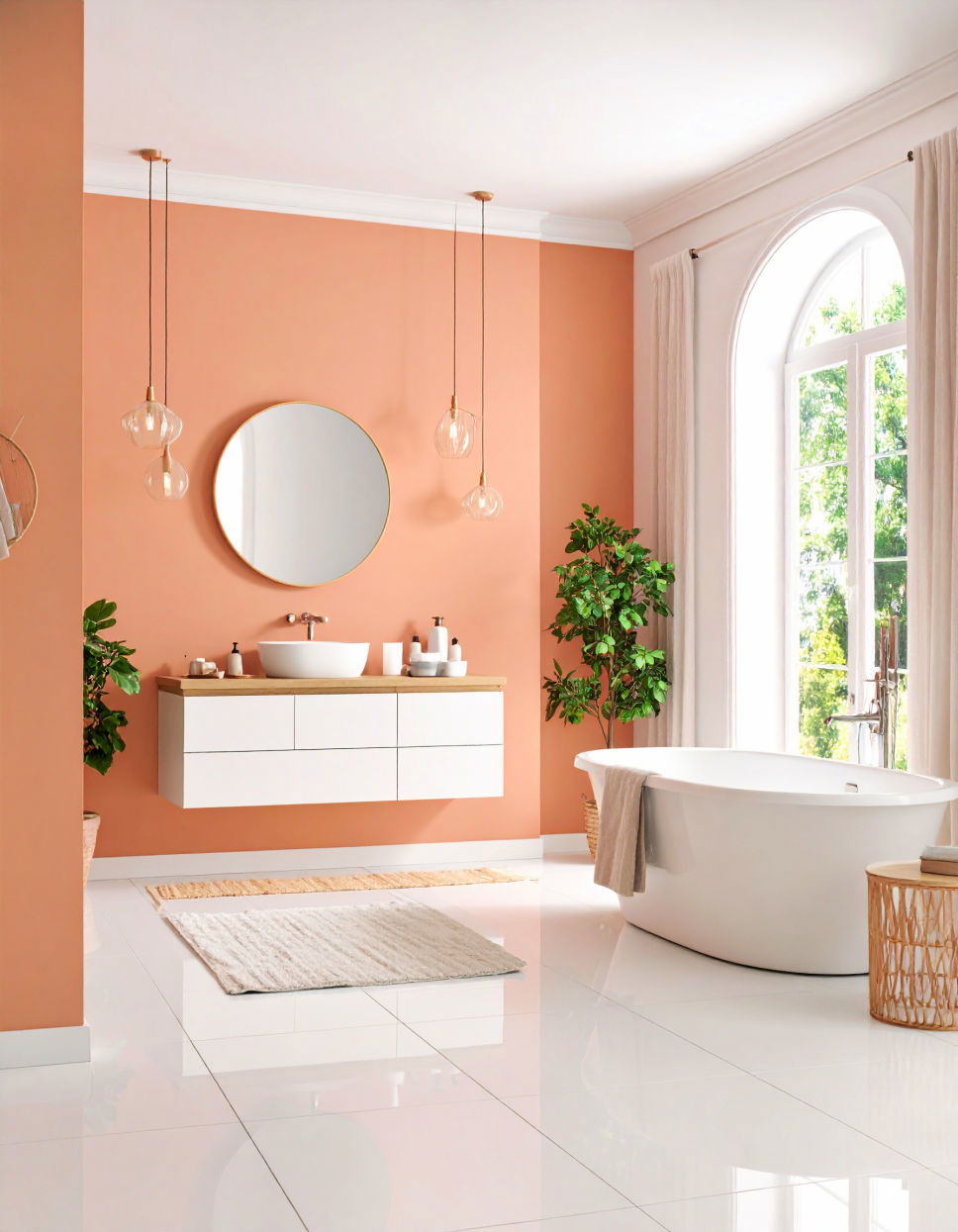
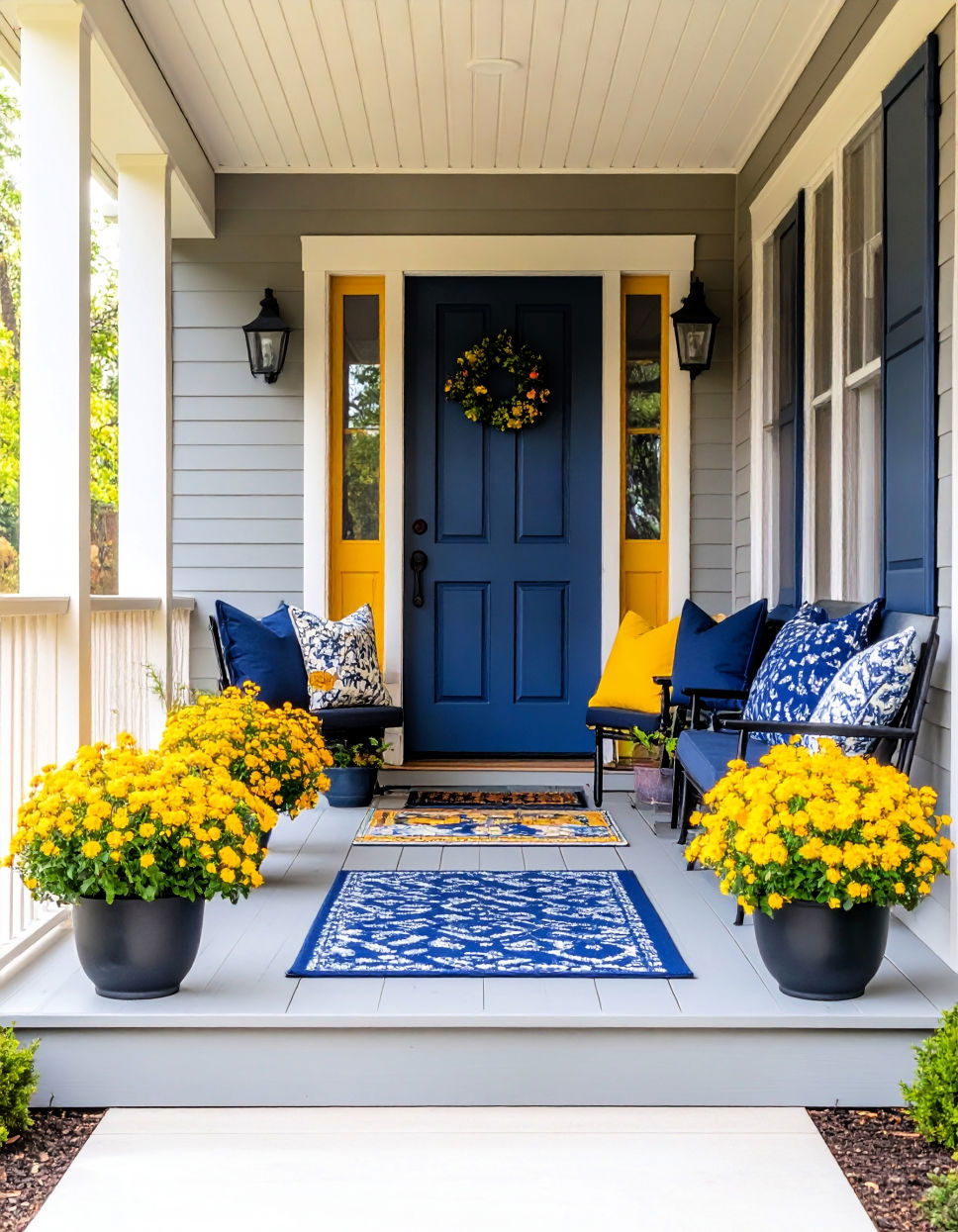

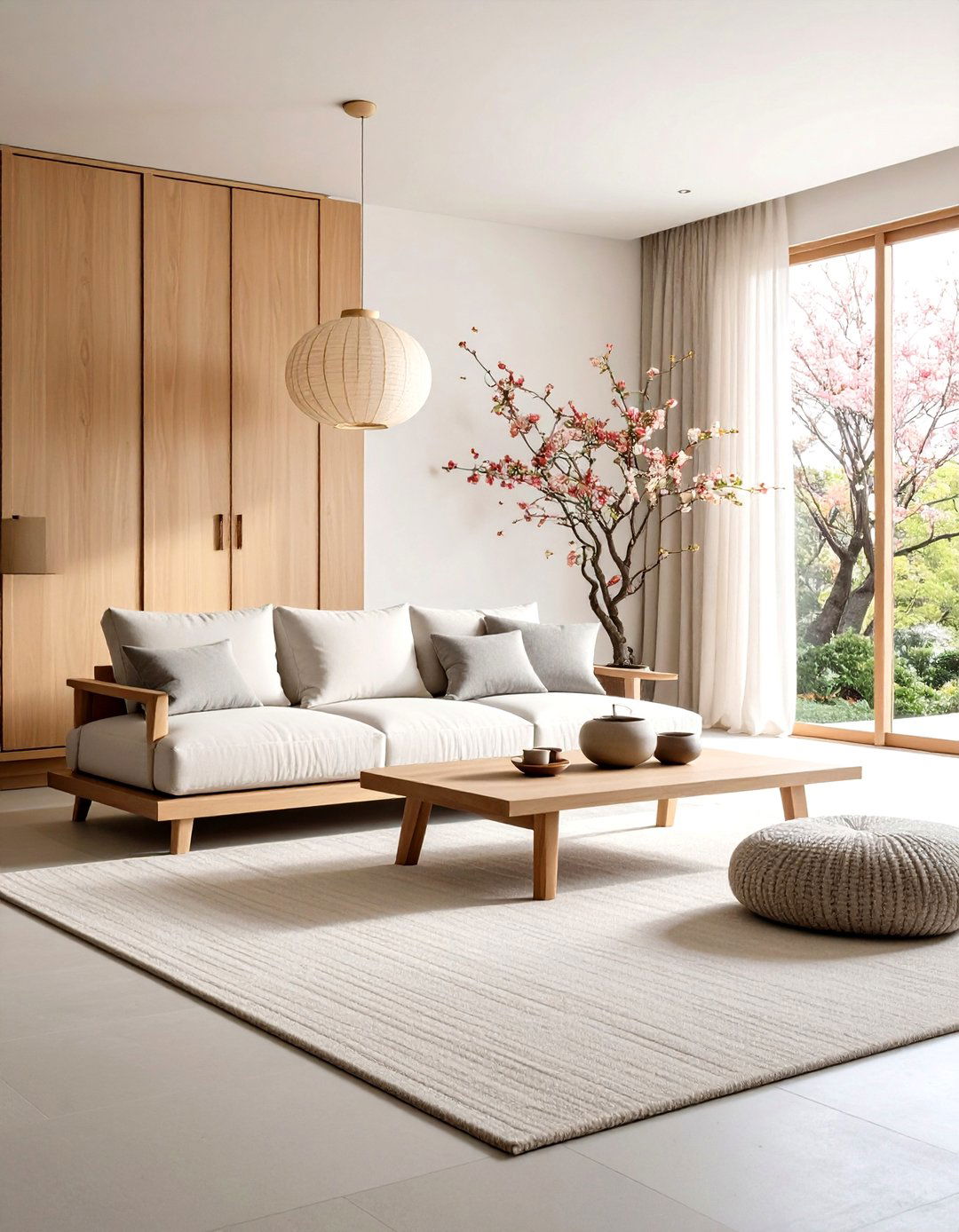
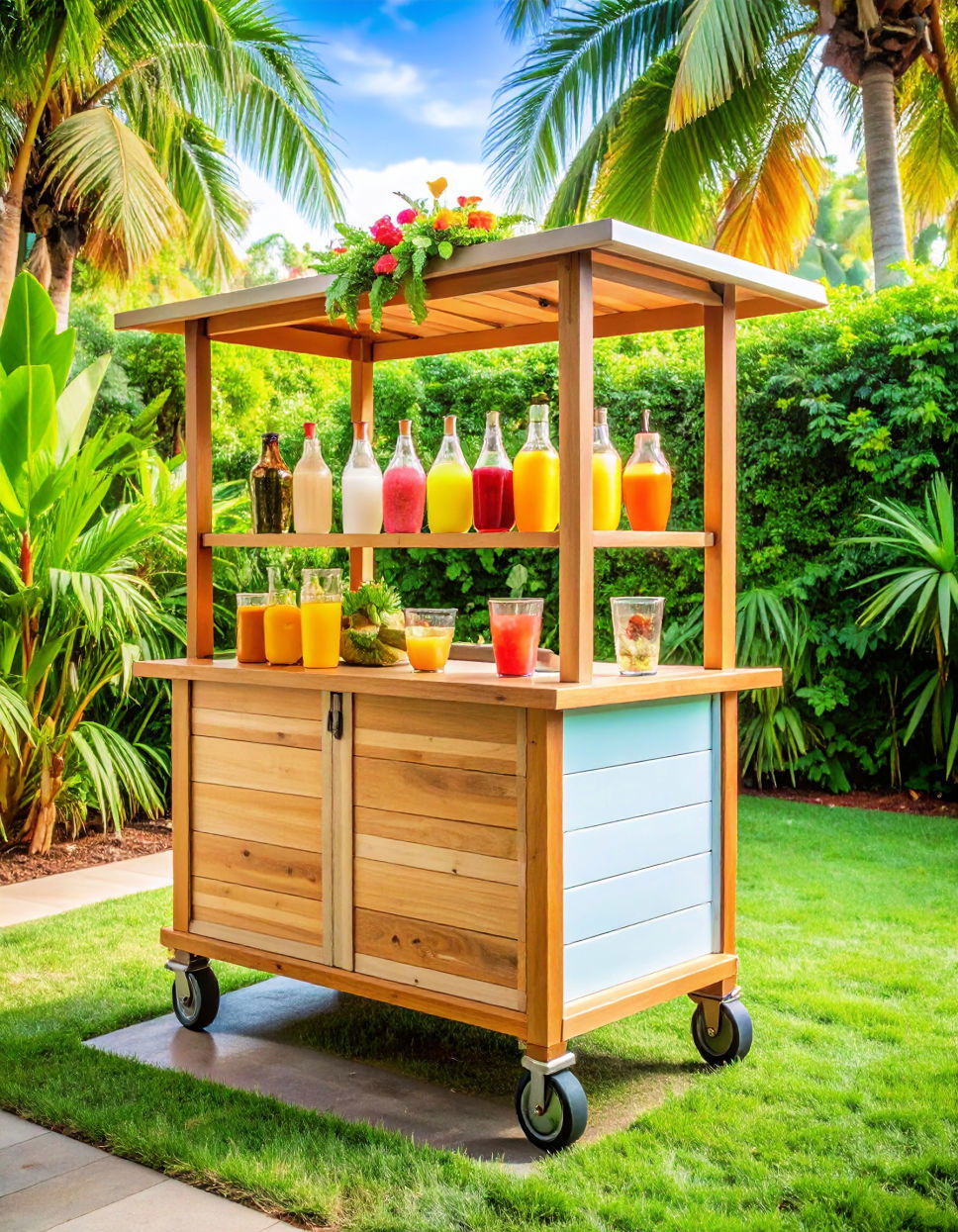
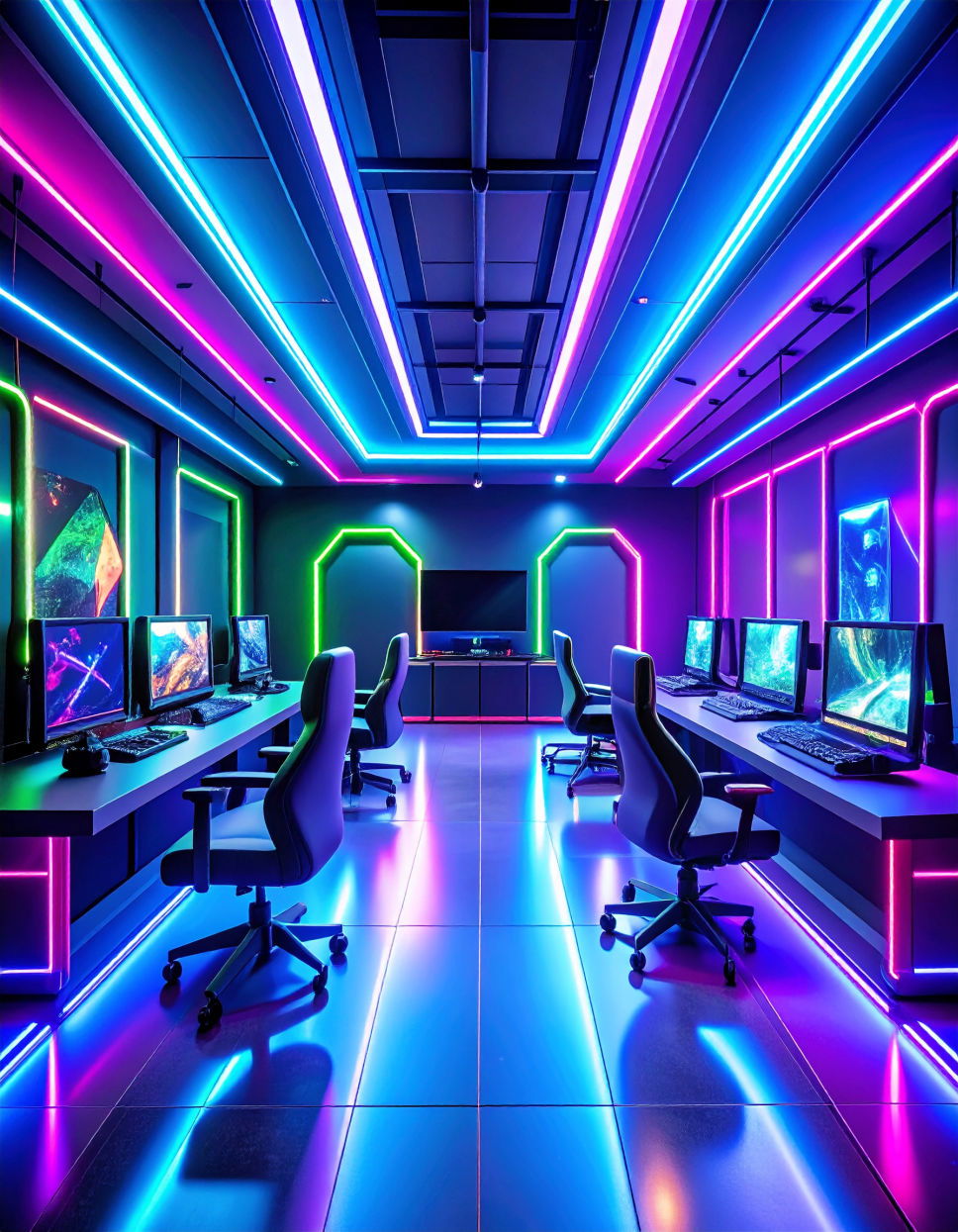
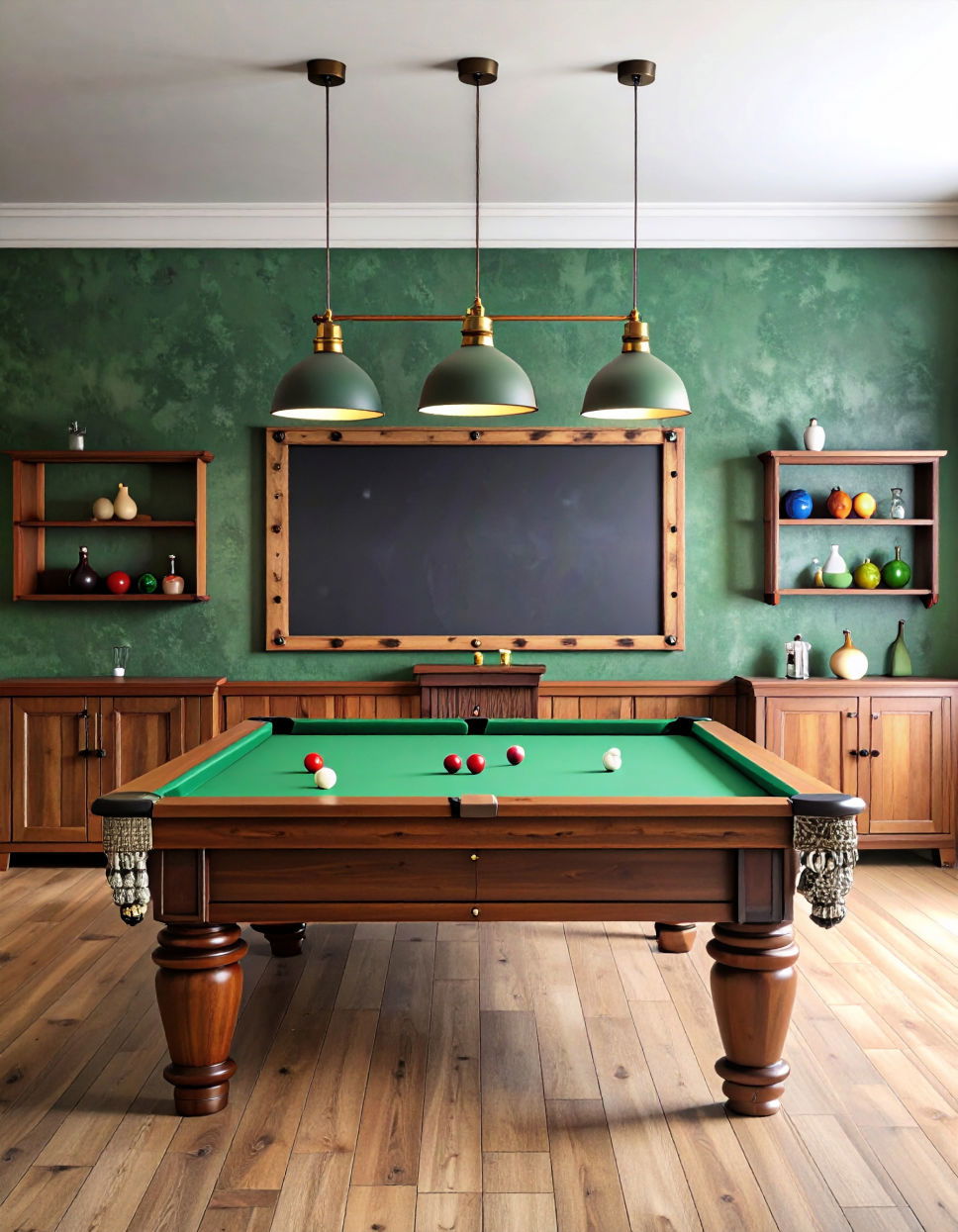
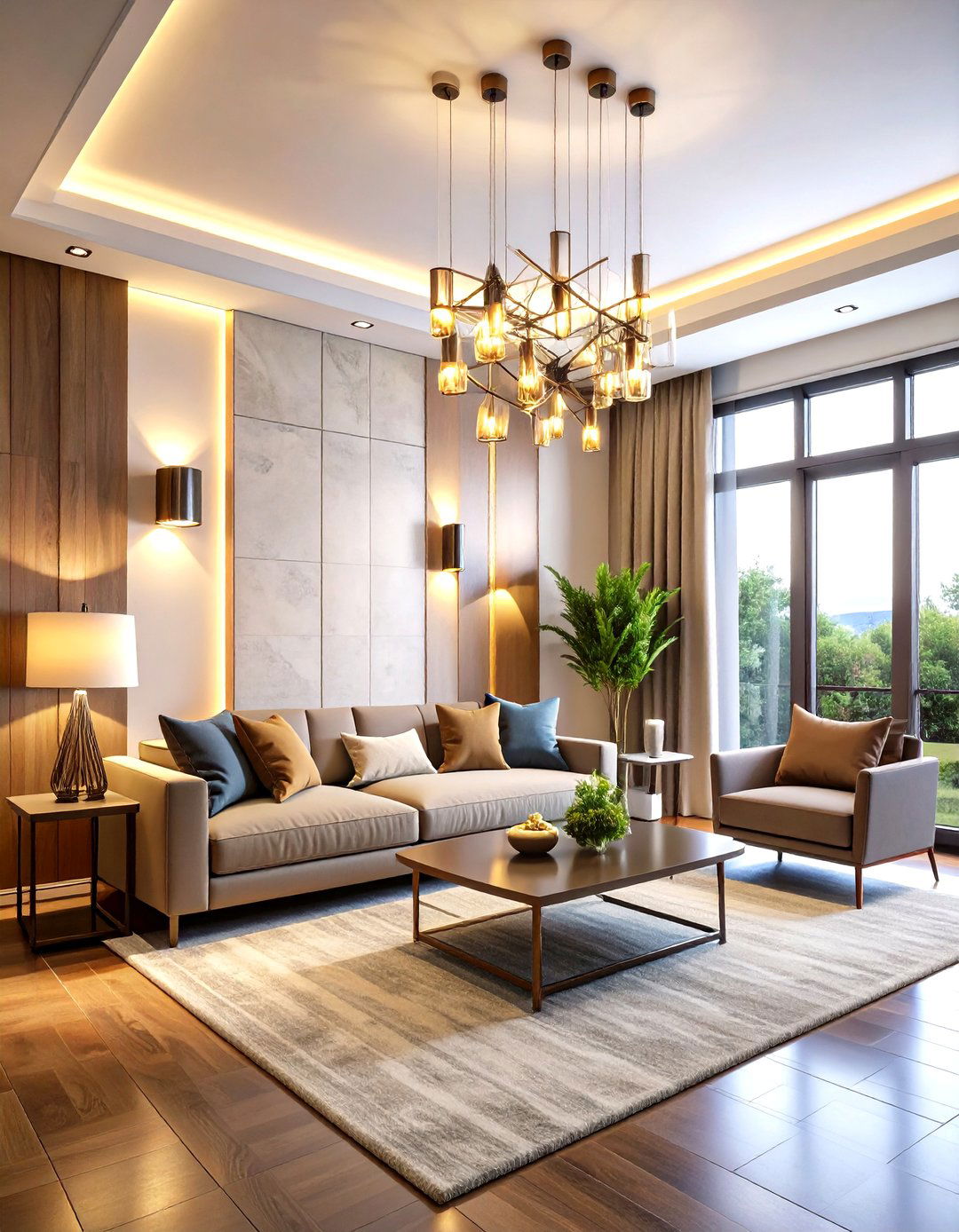
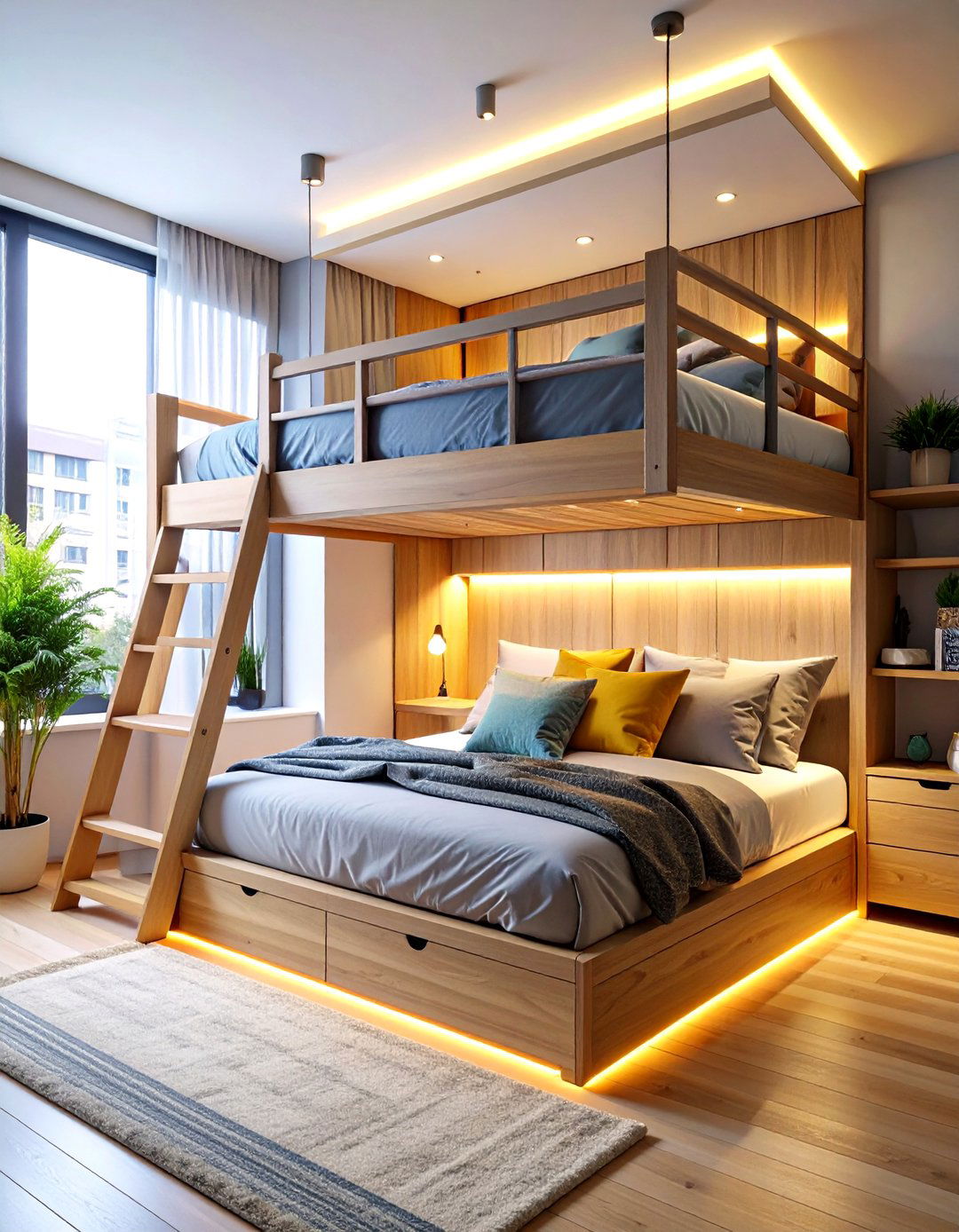

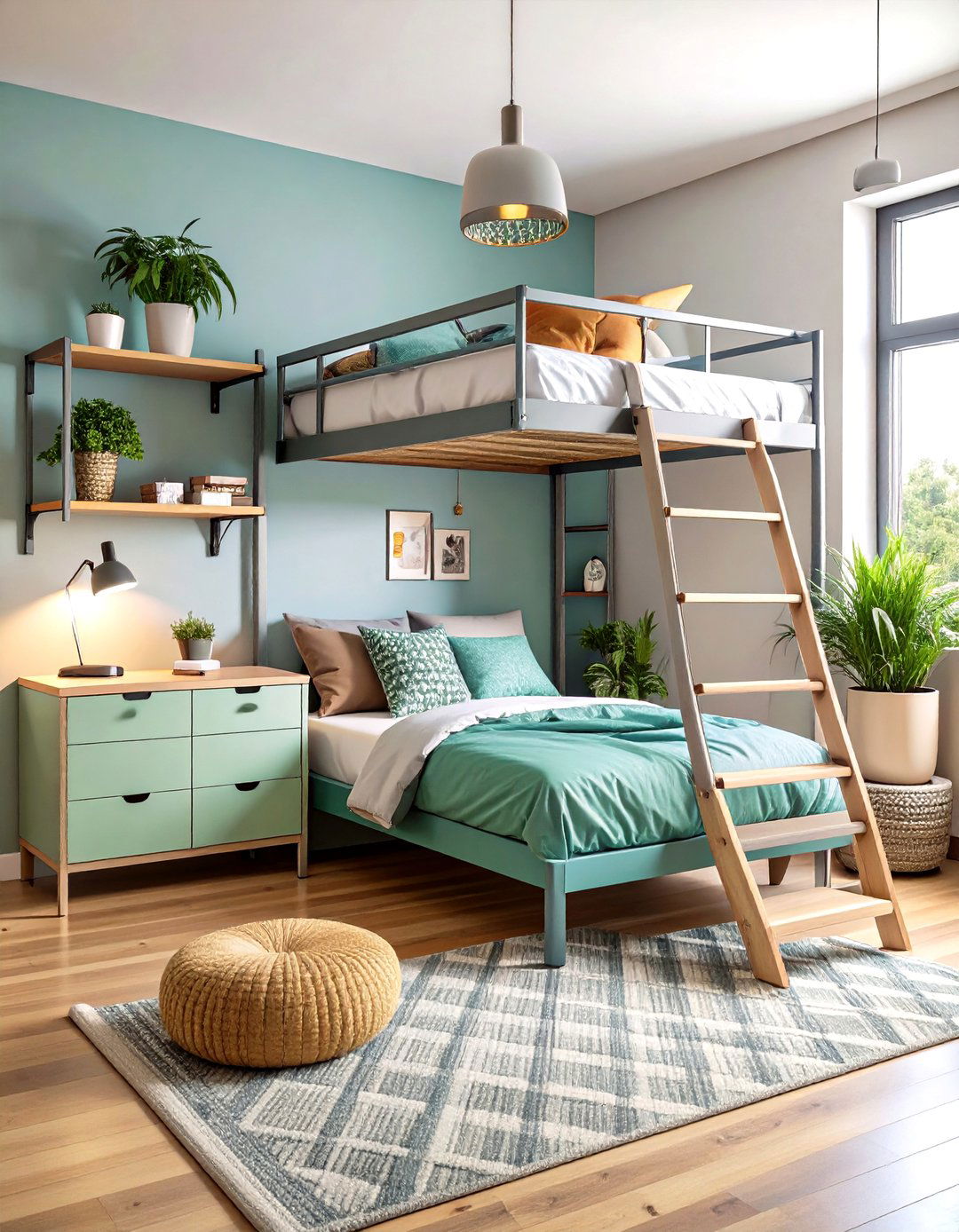
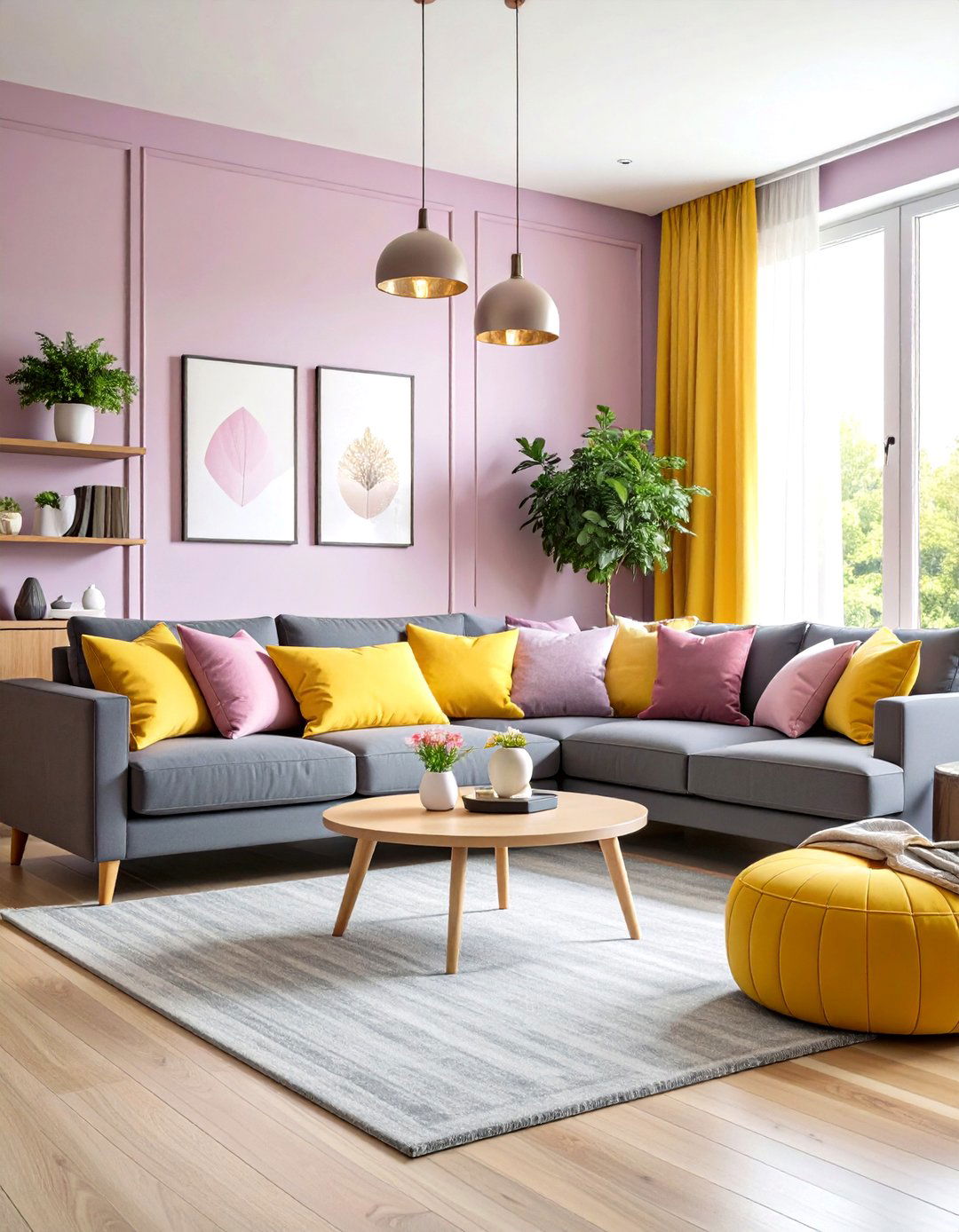
Leave a Reply